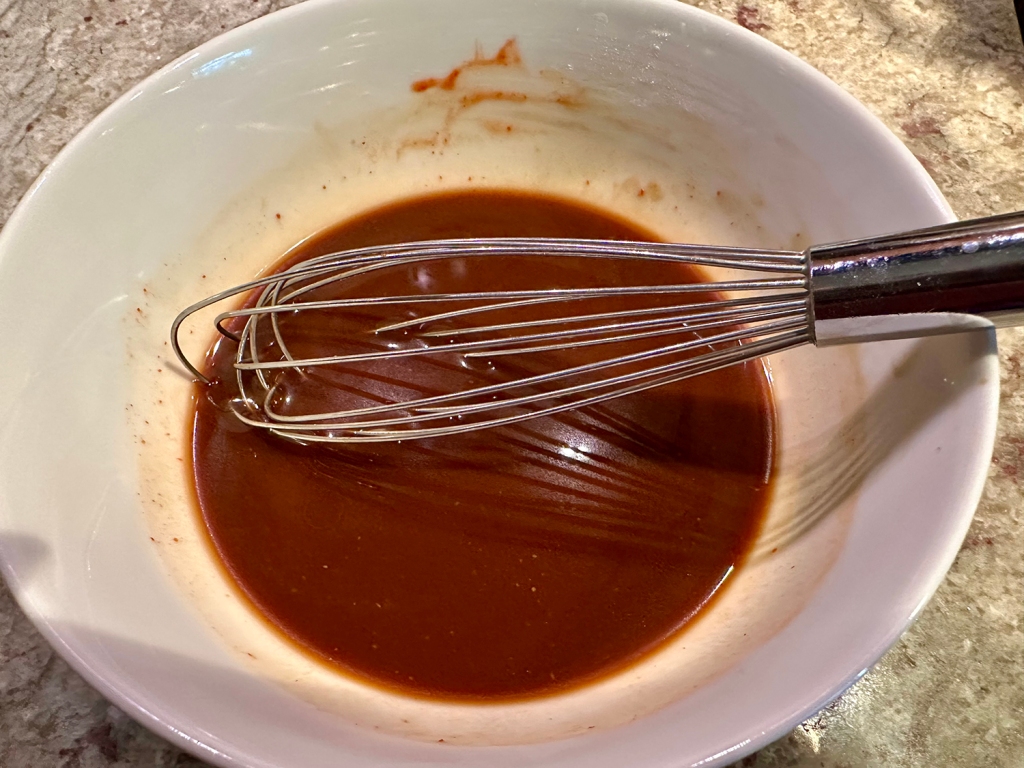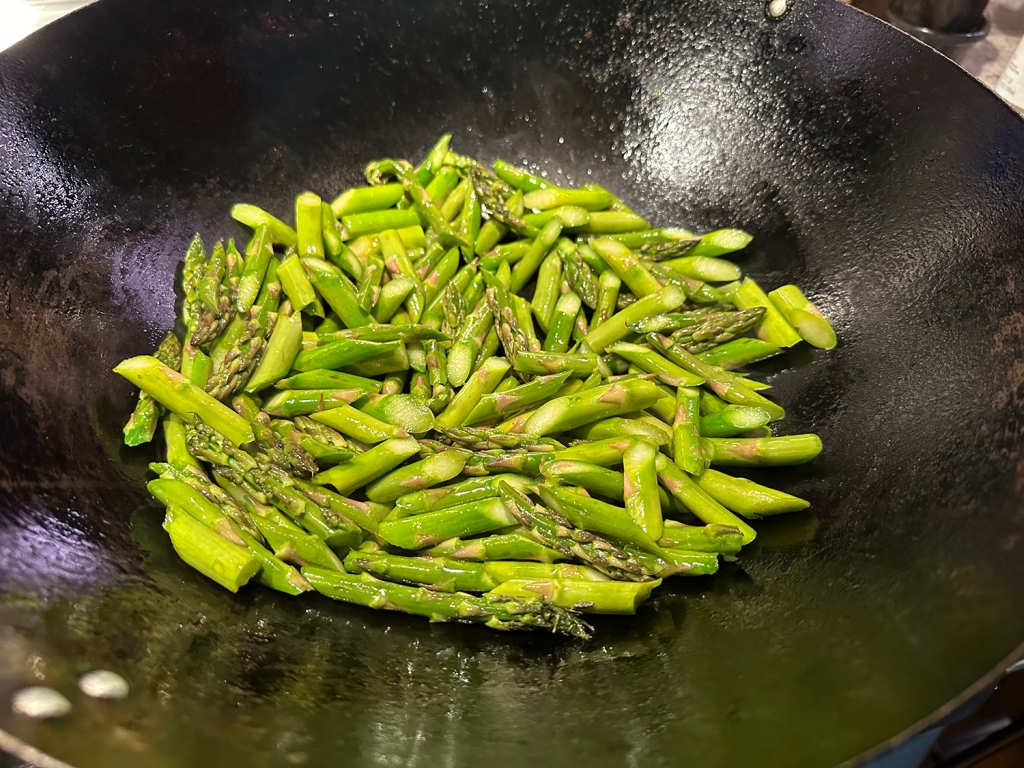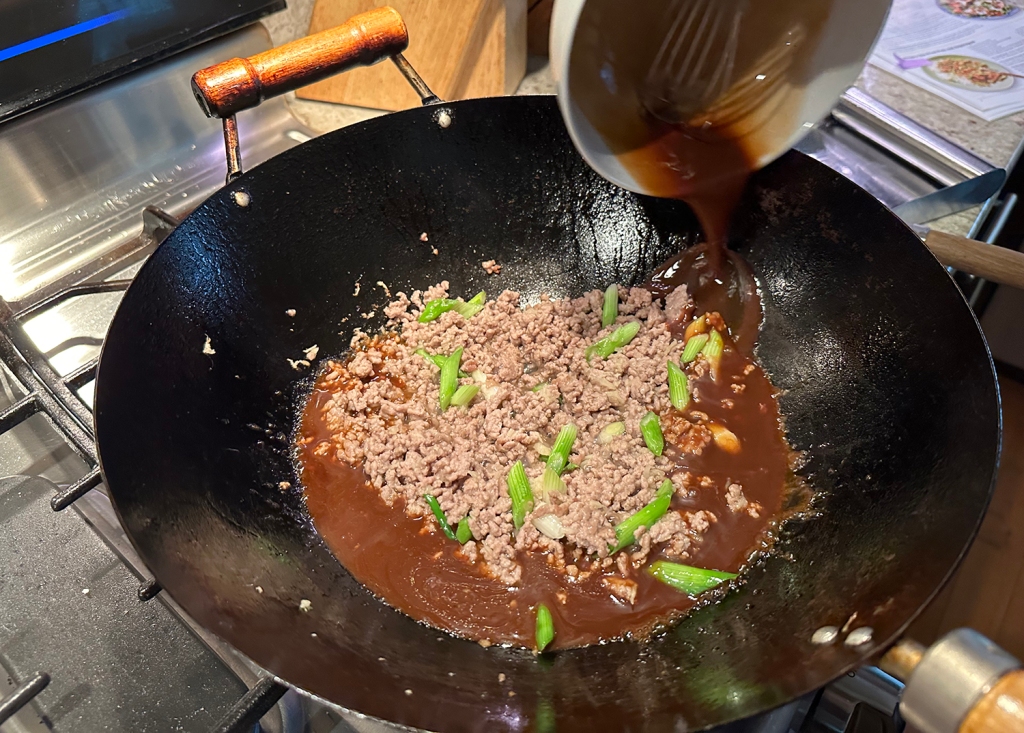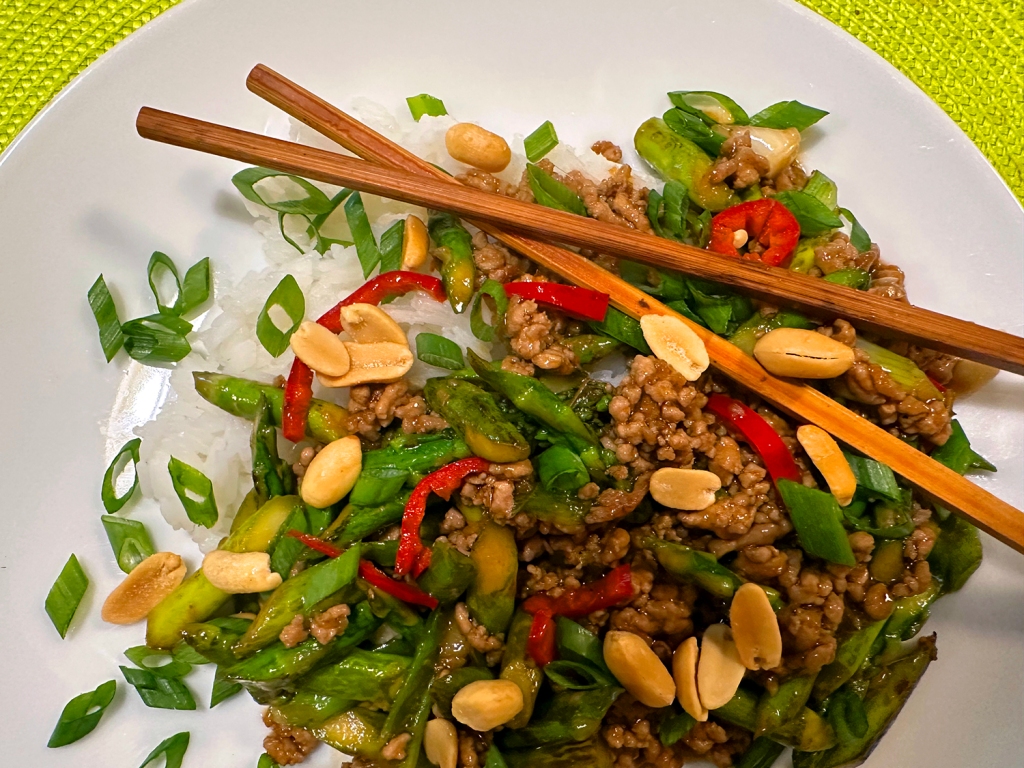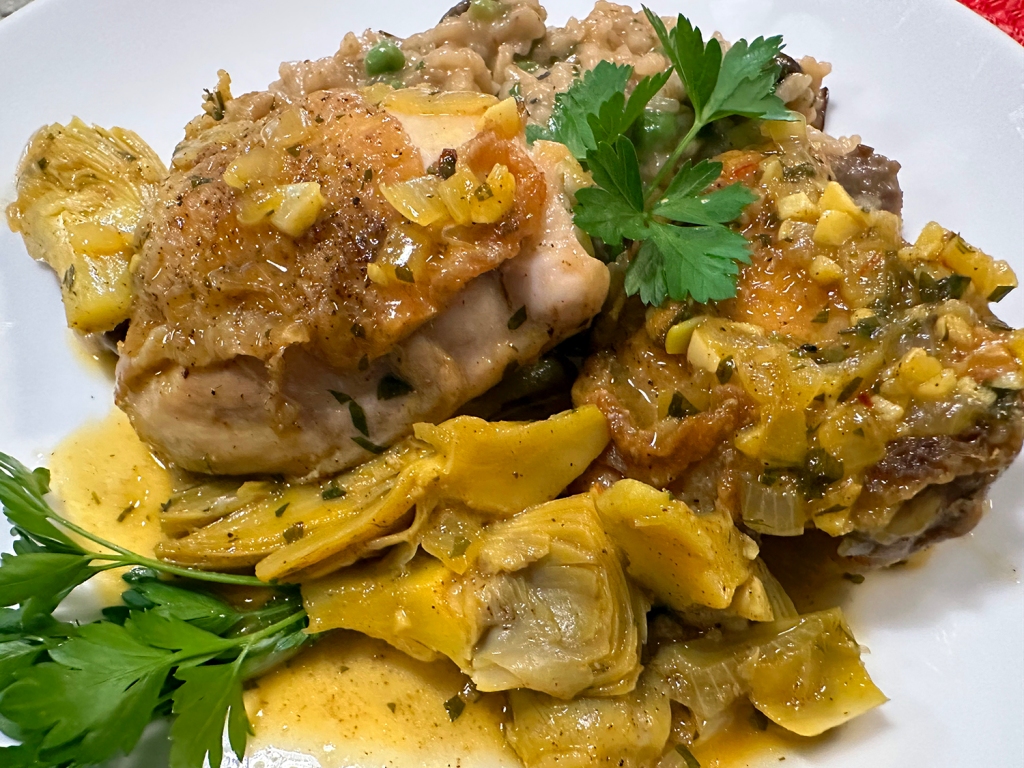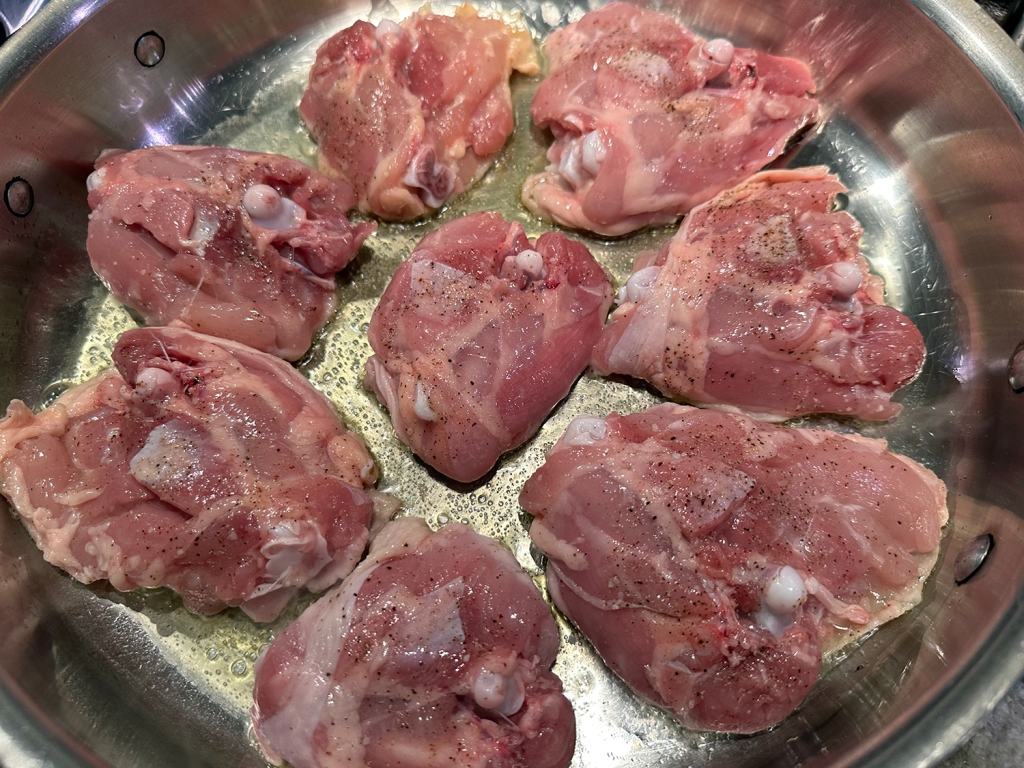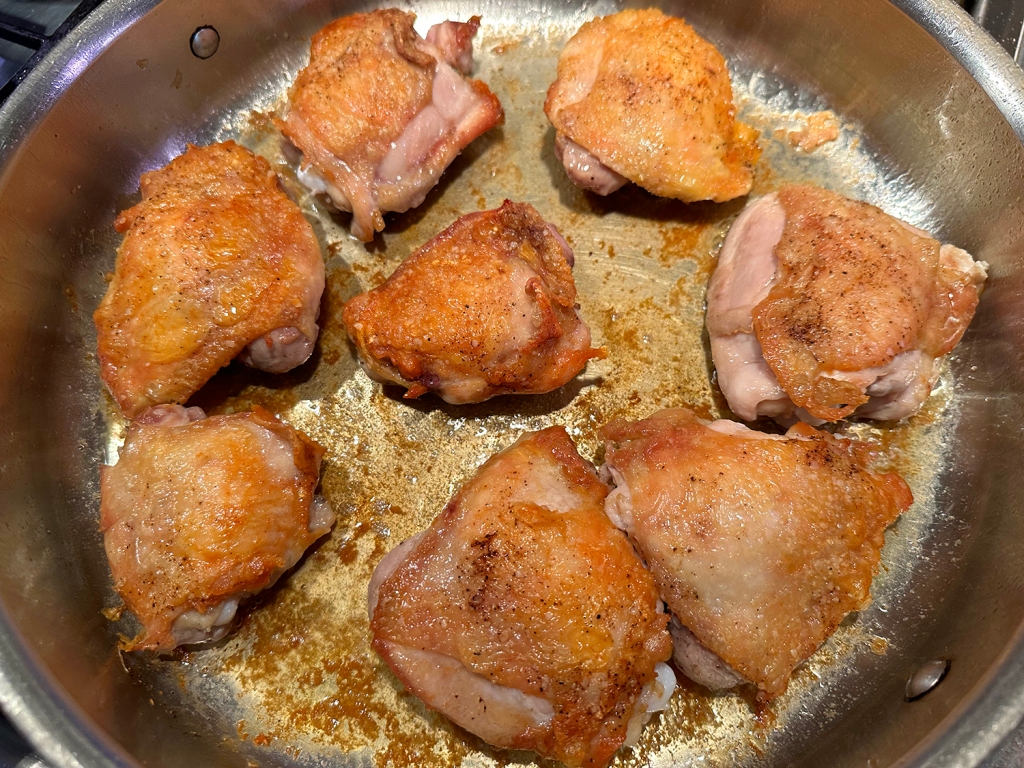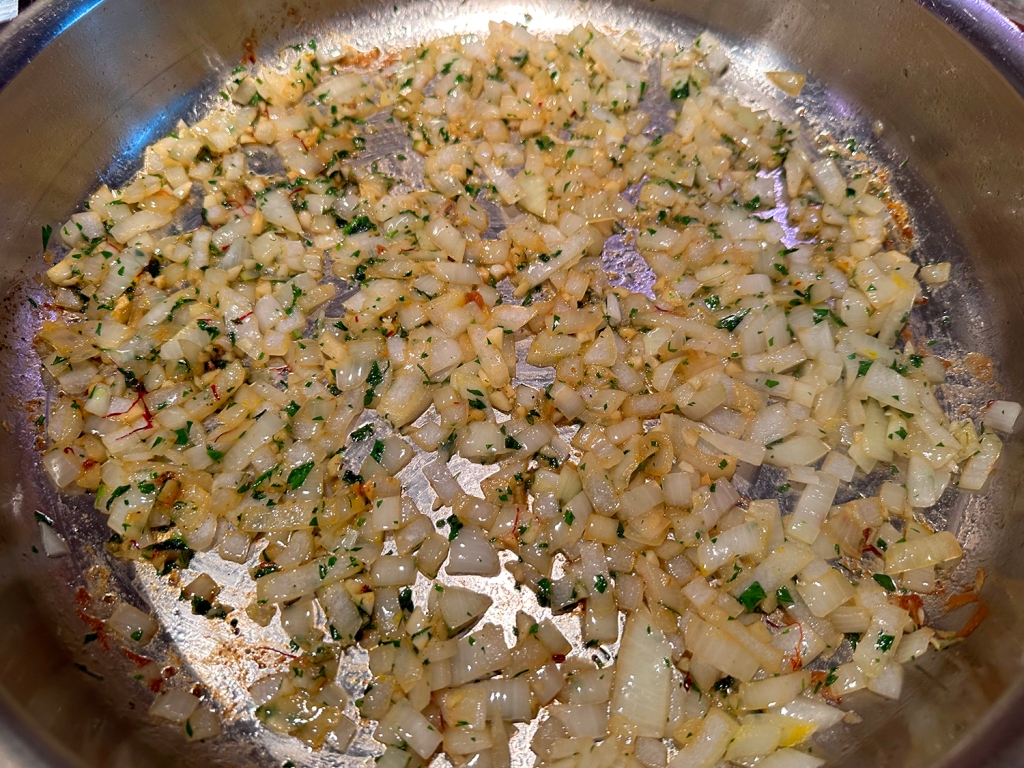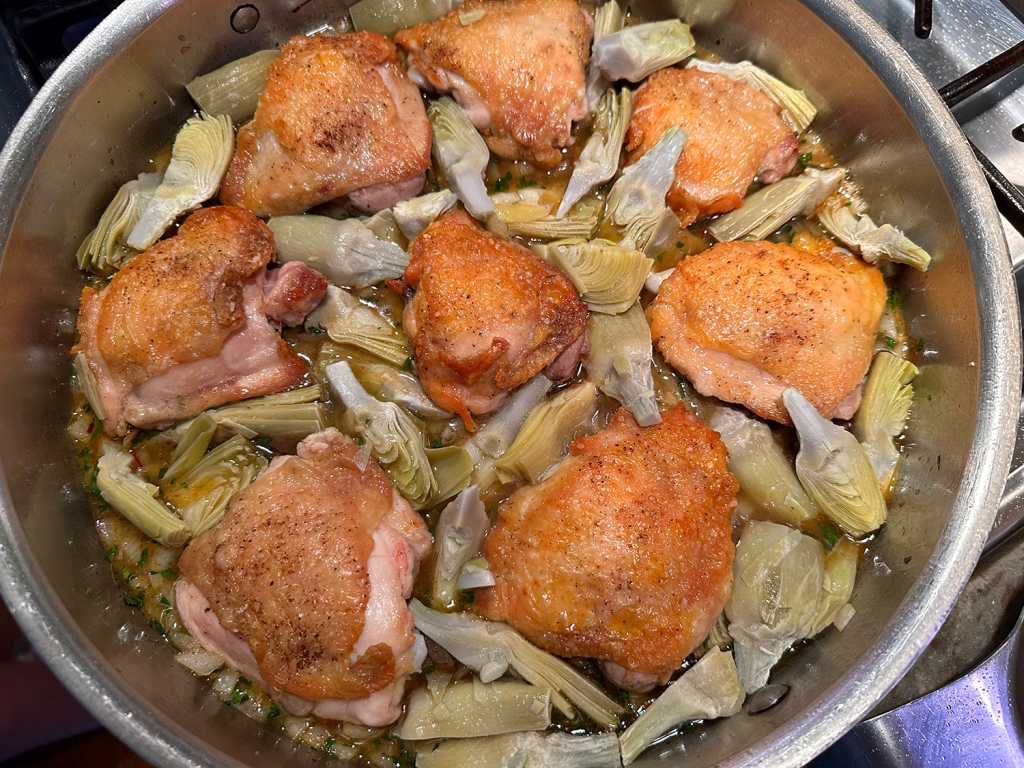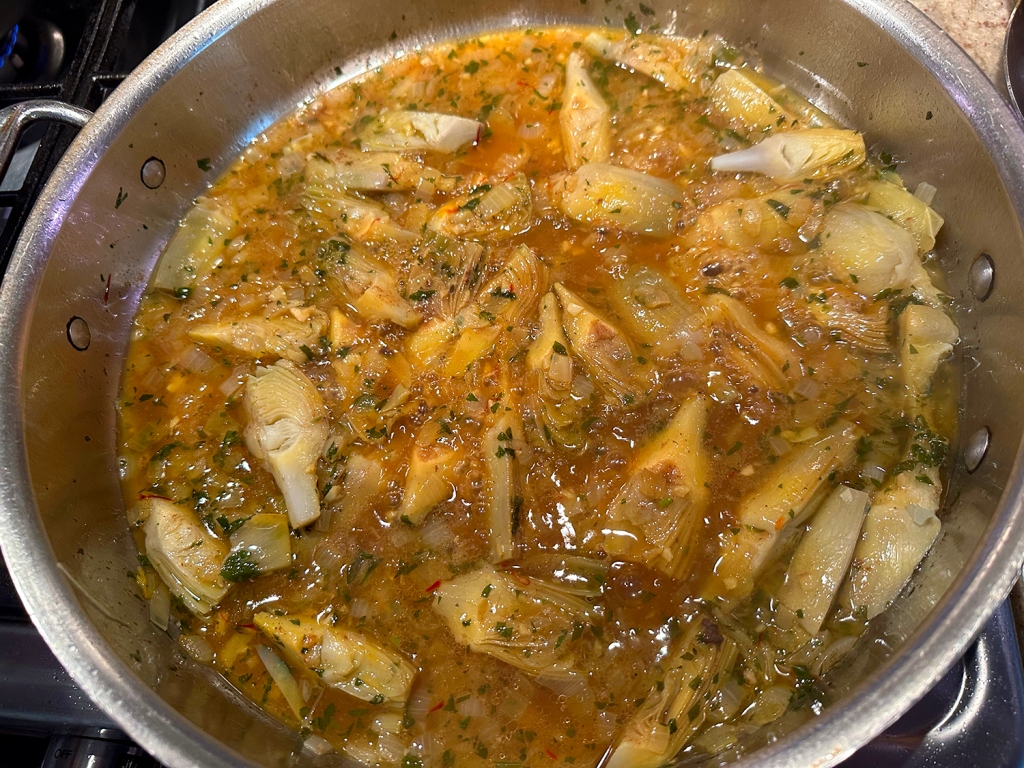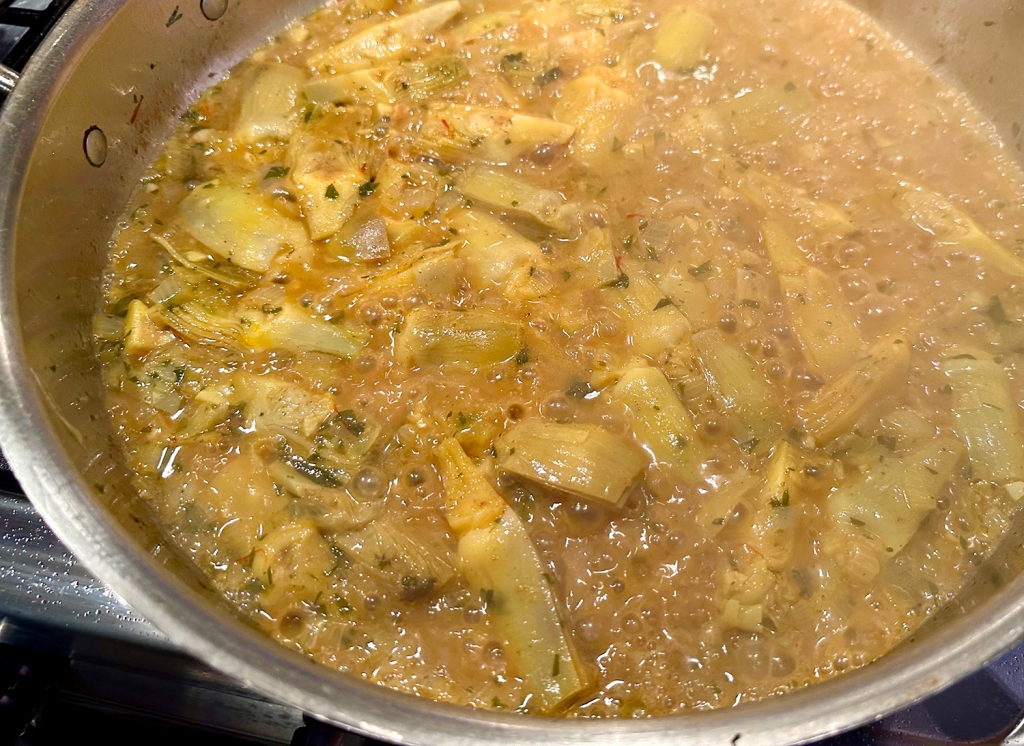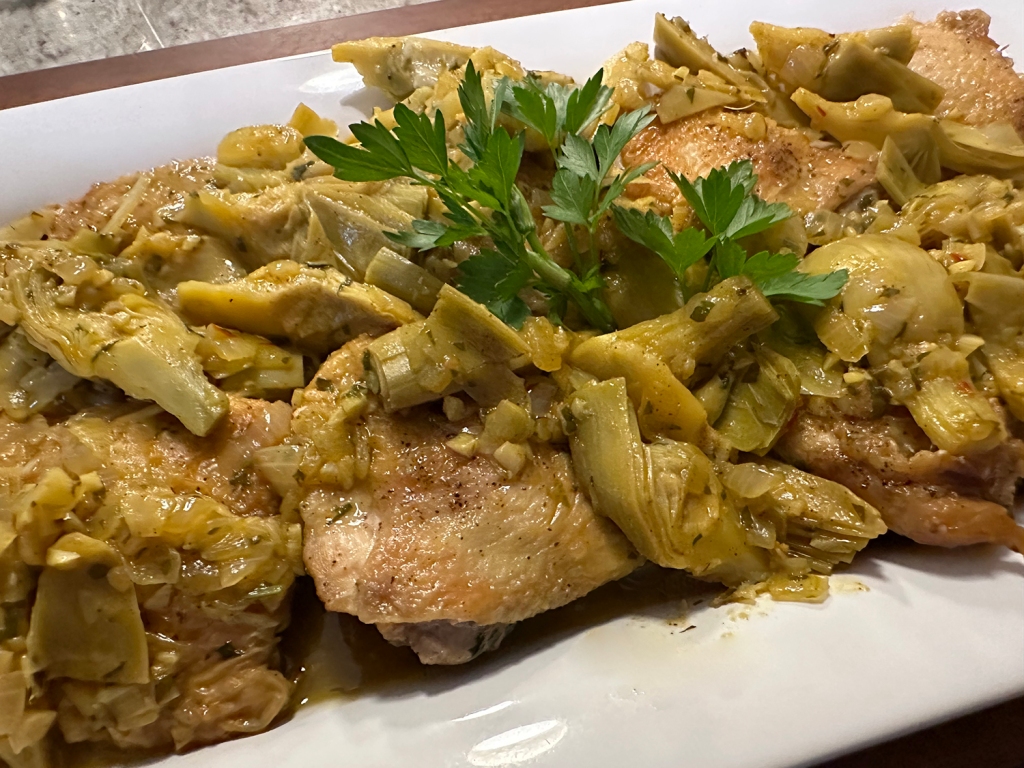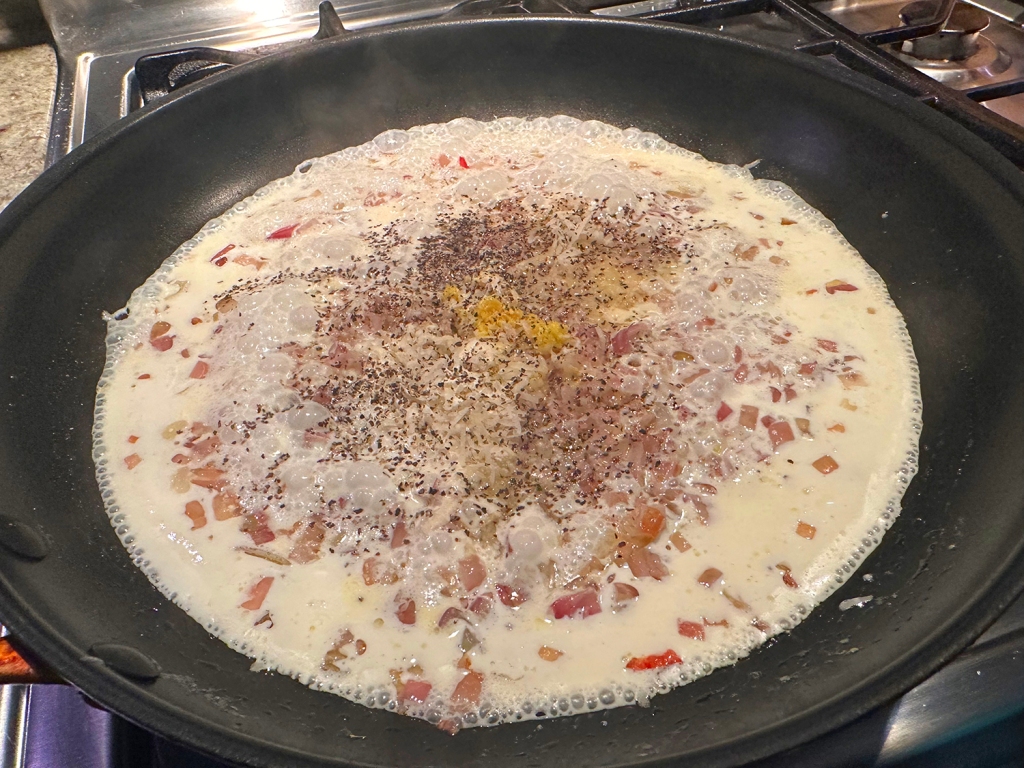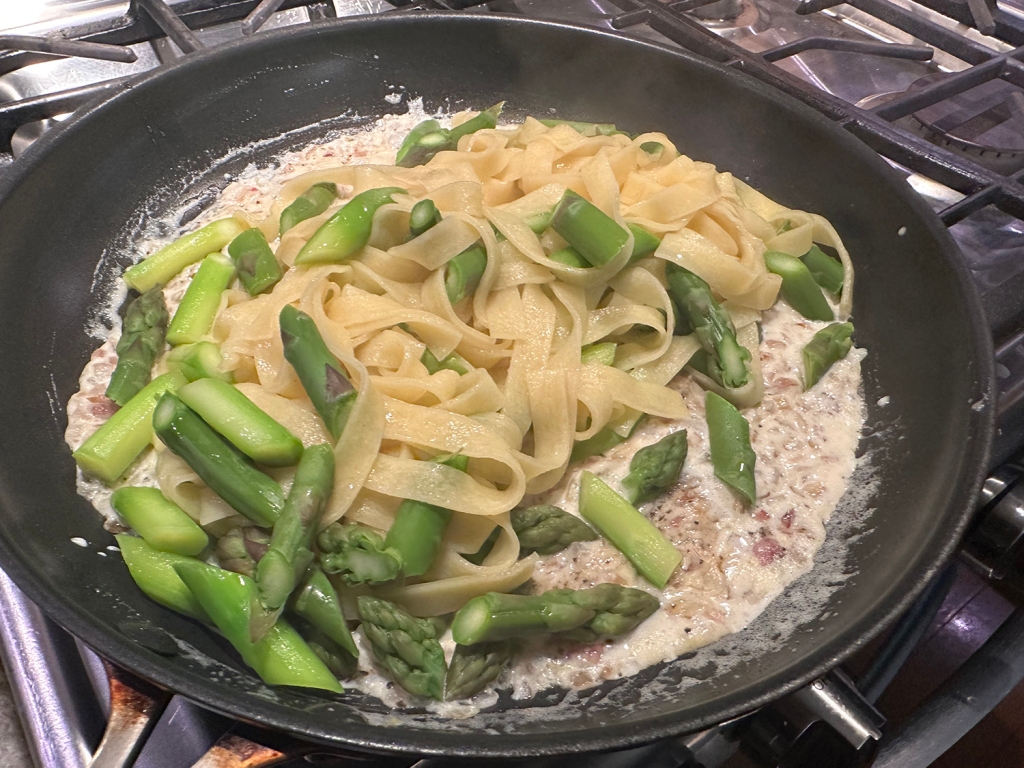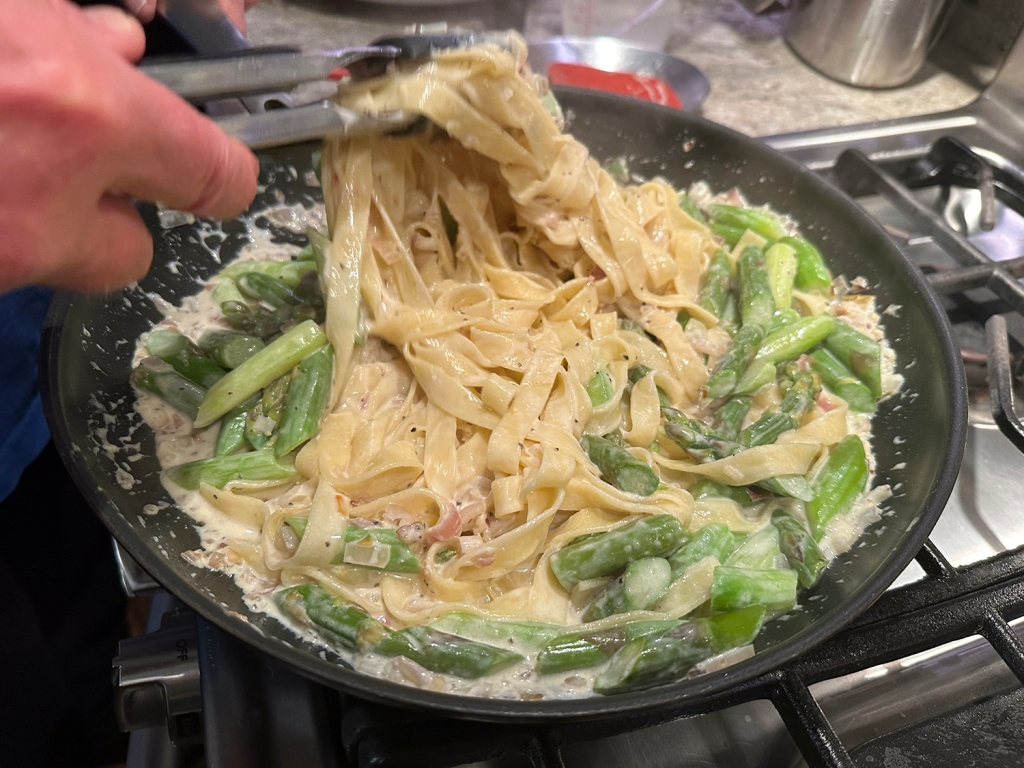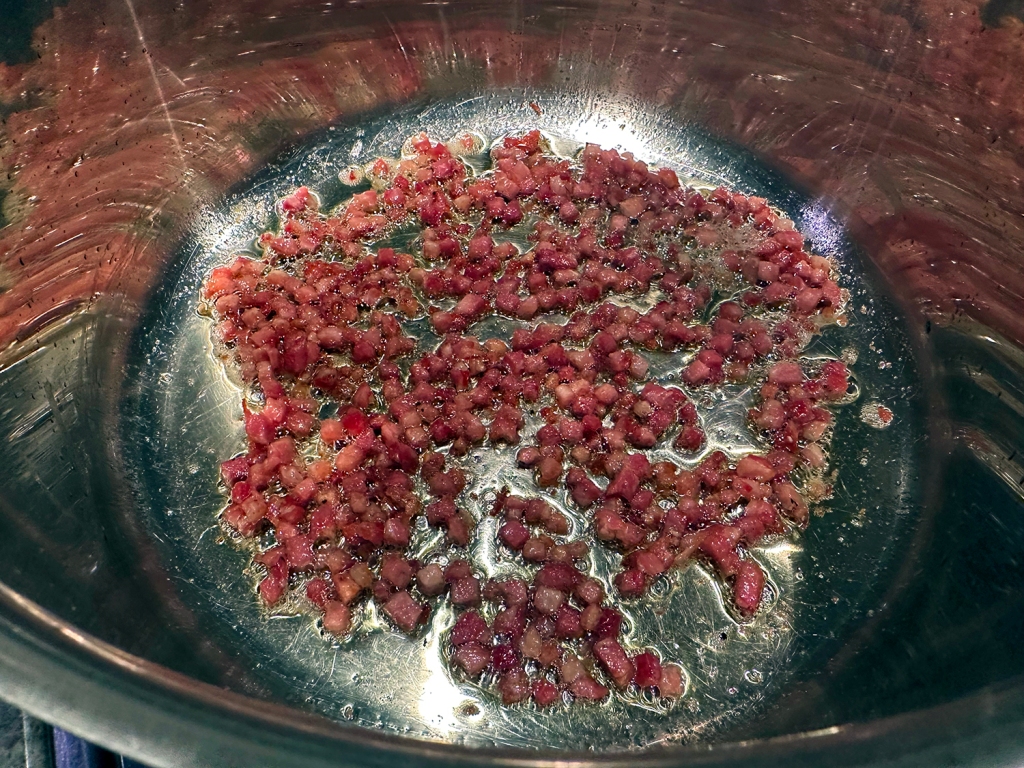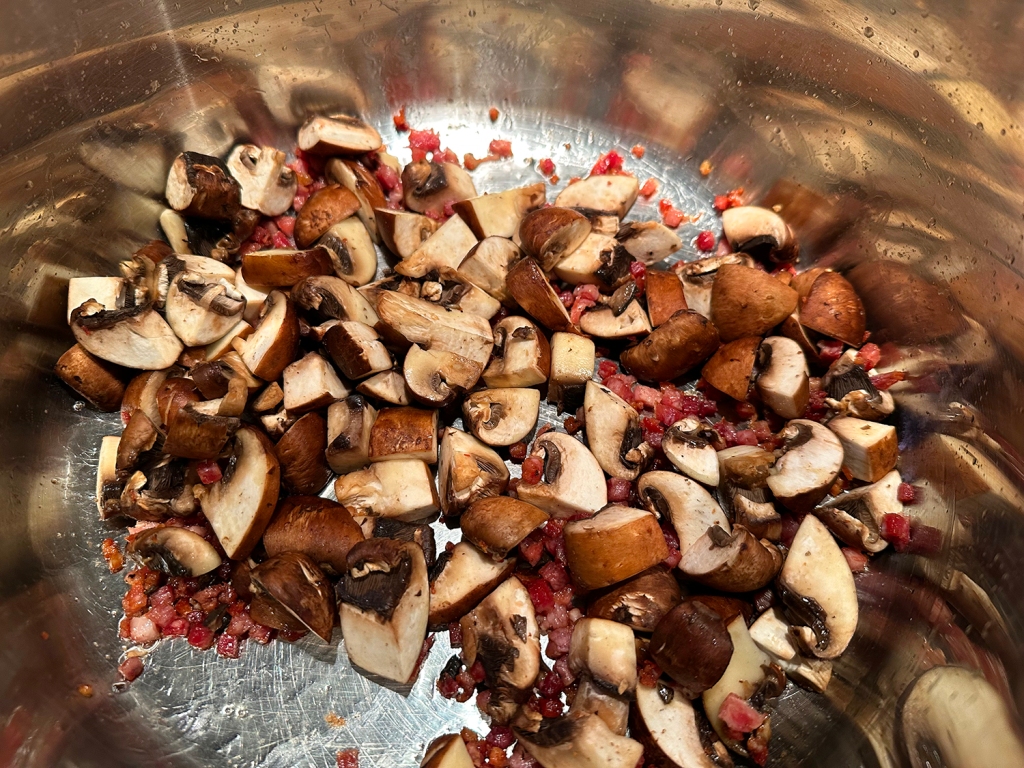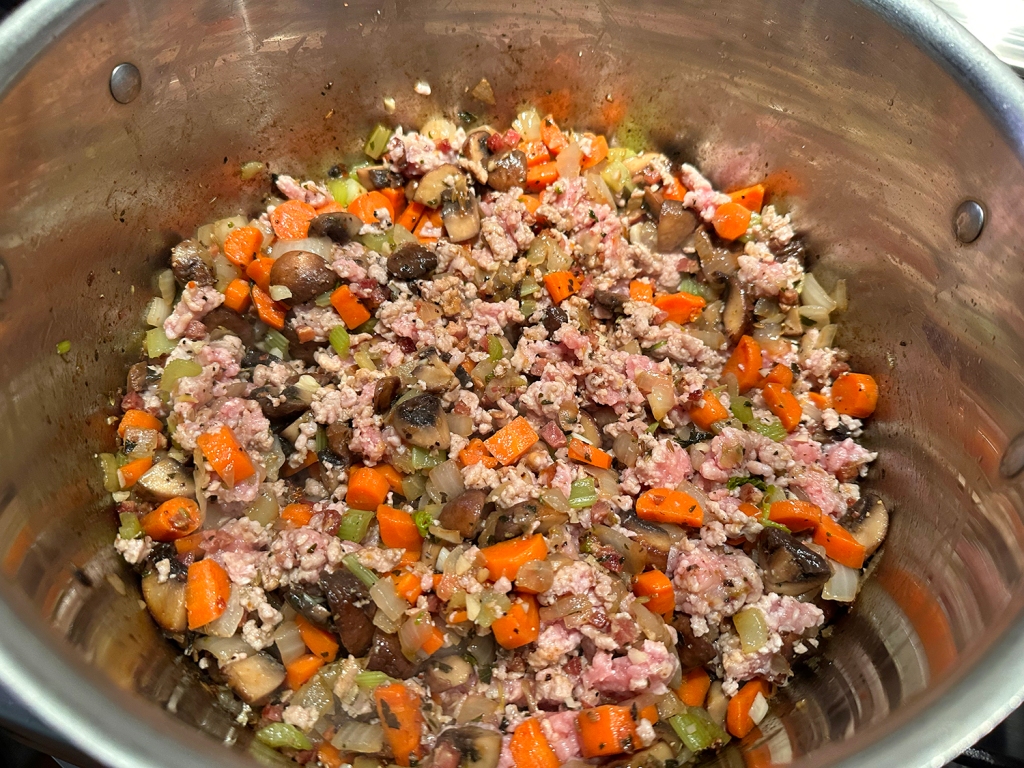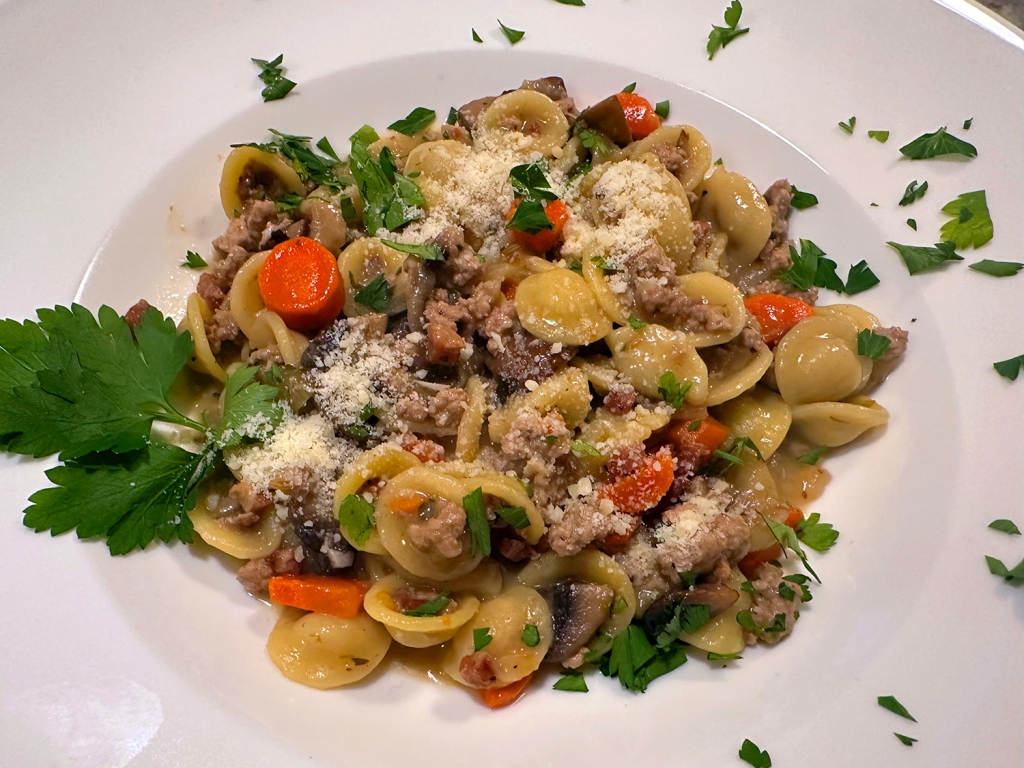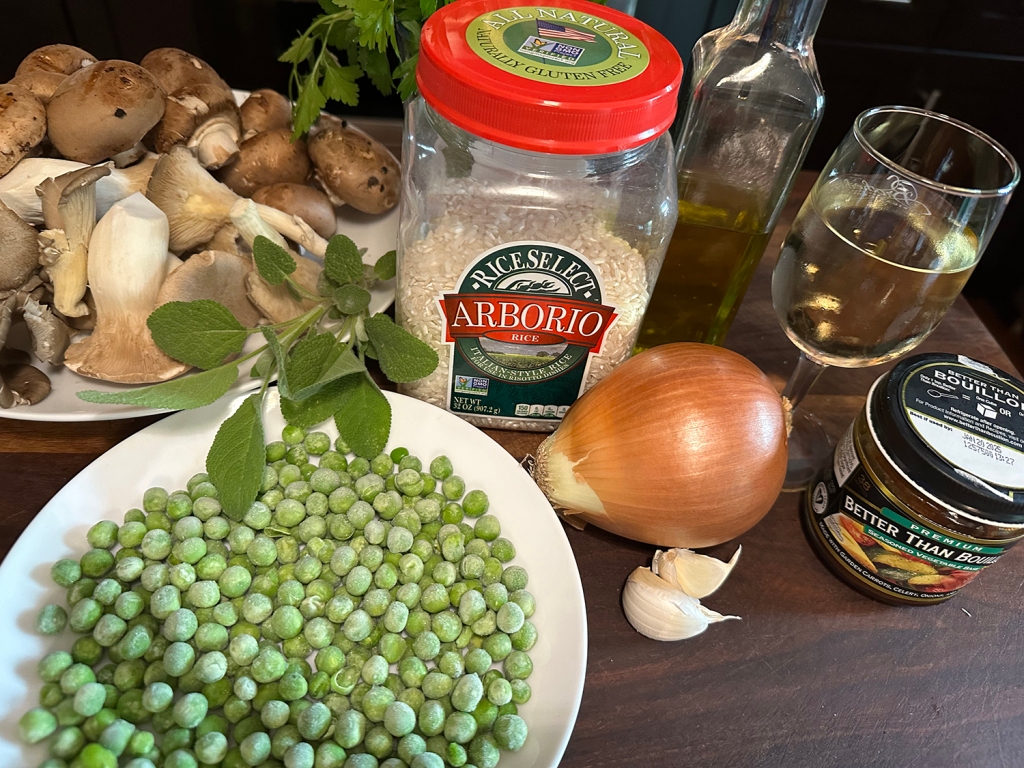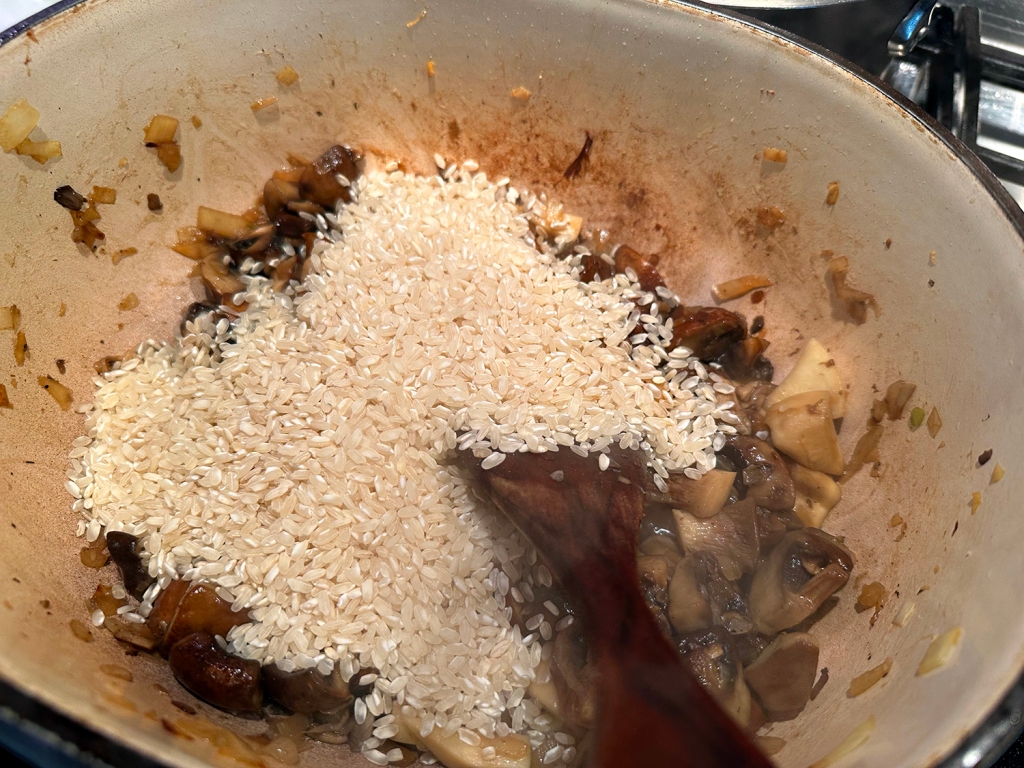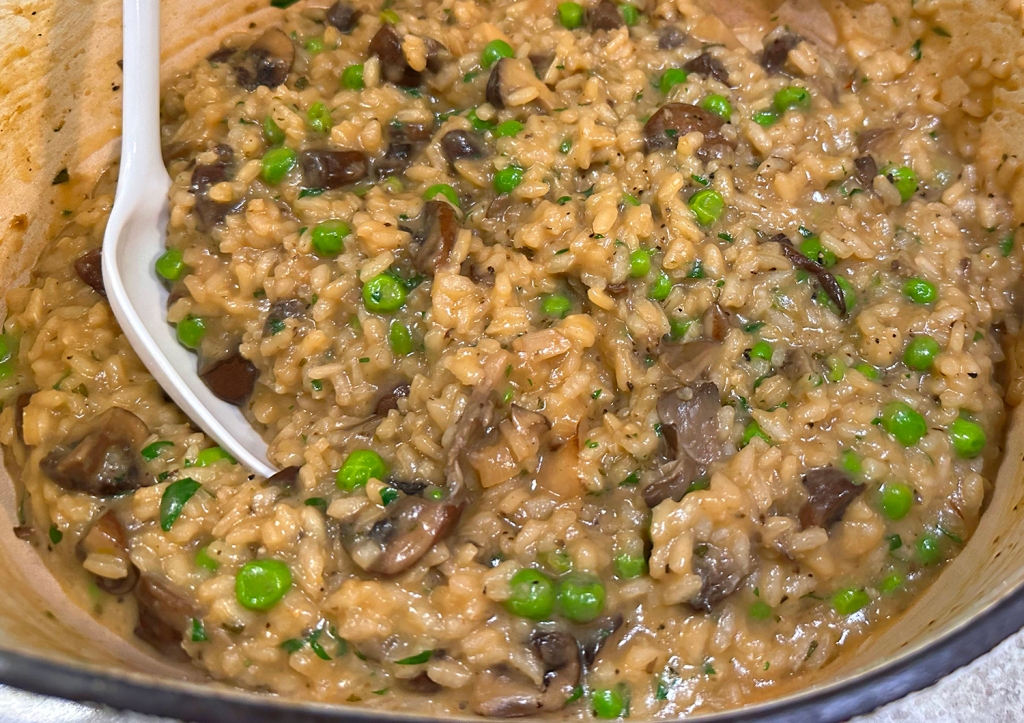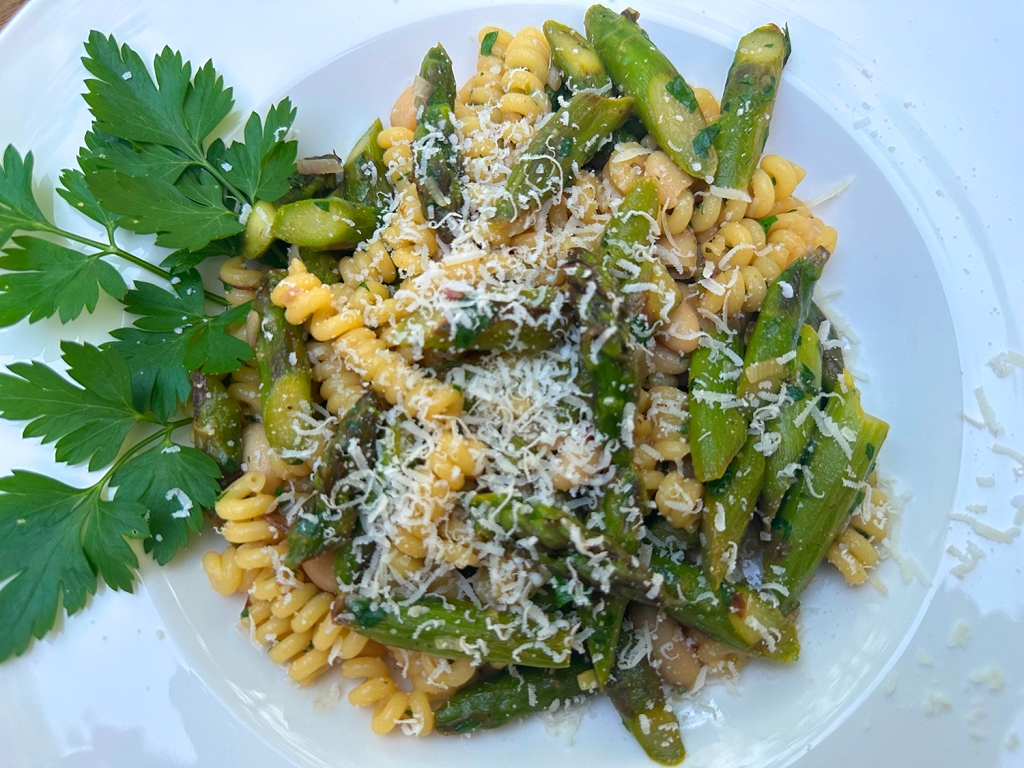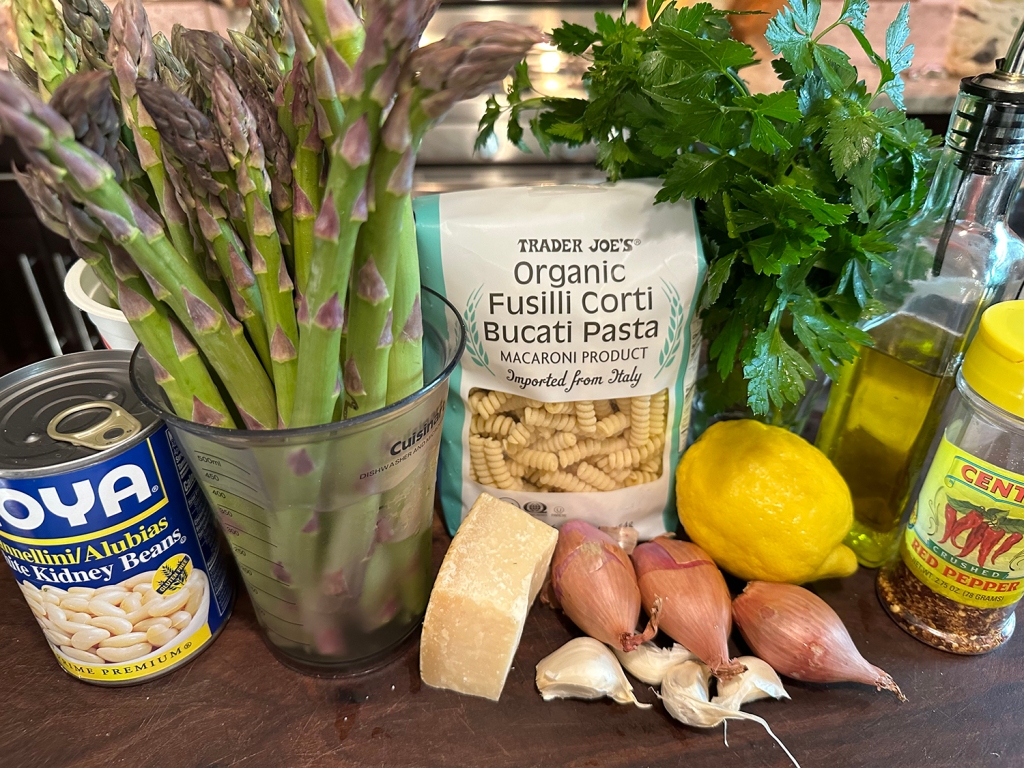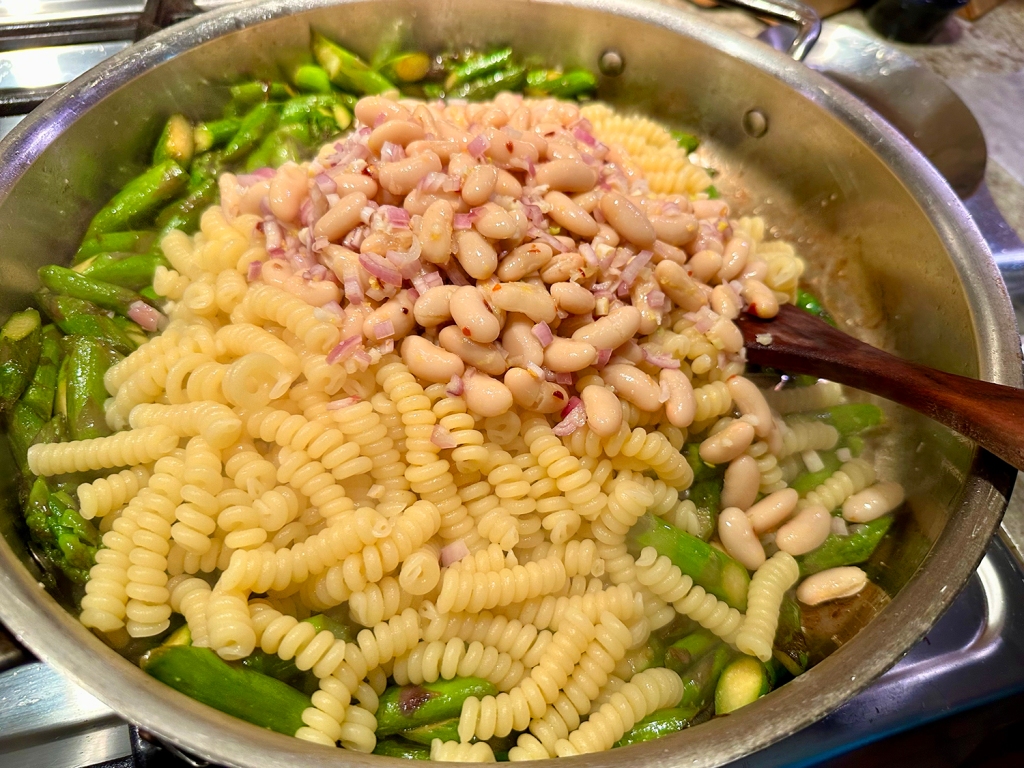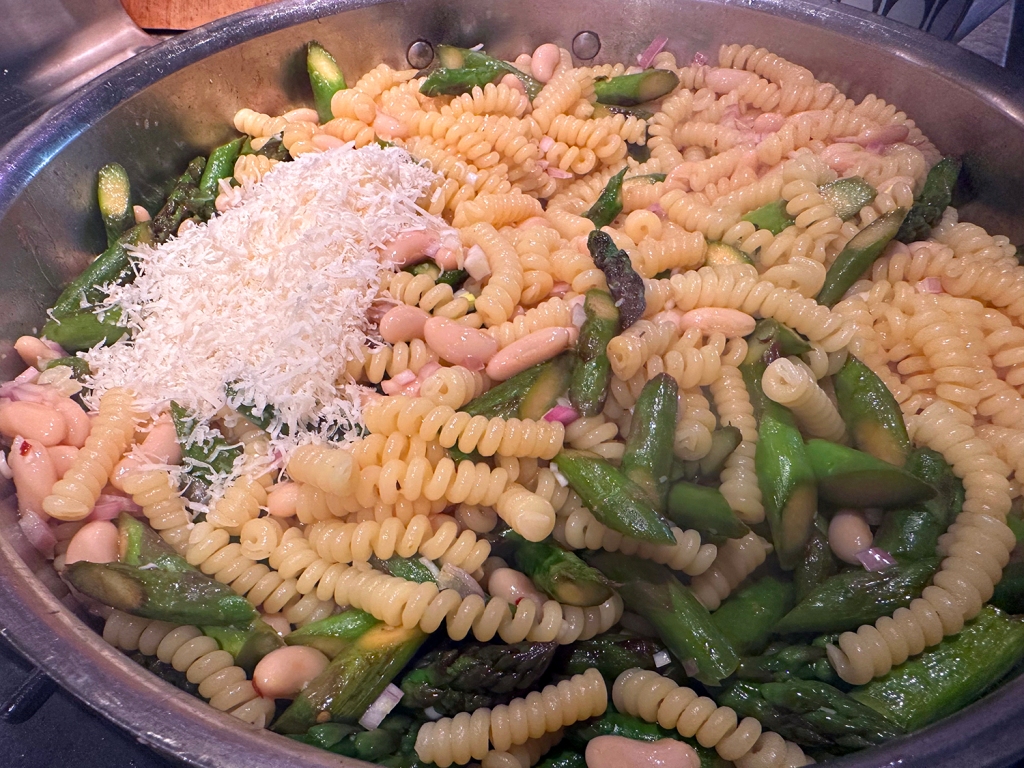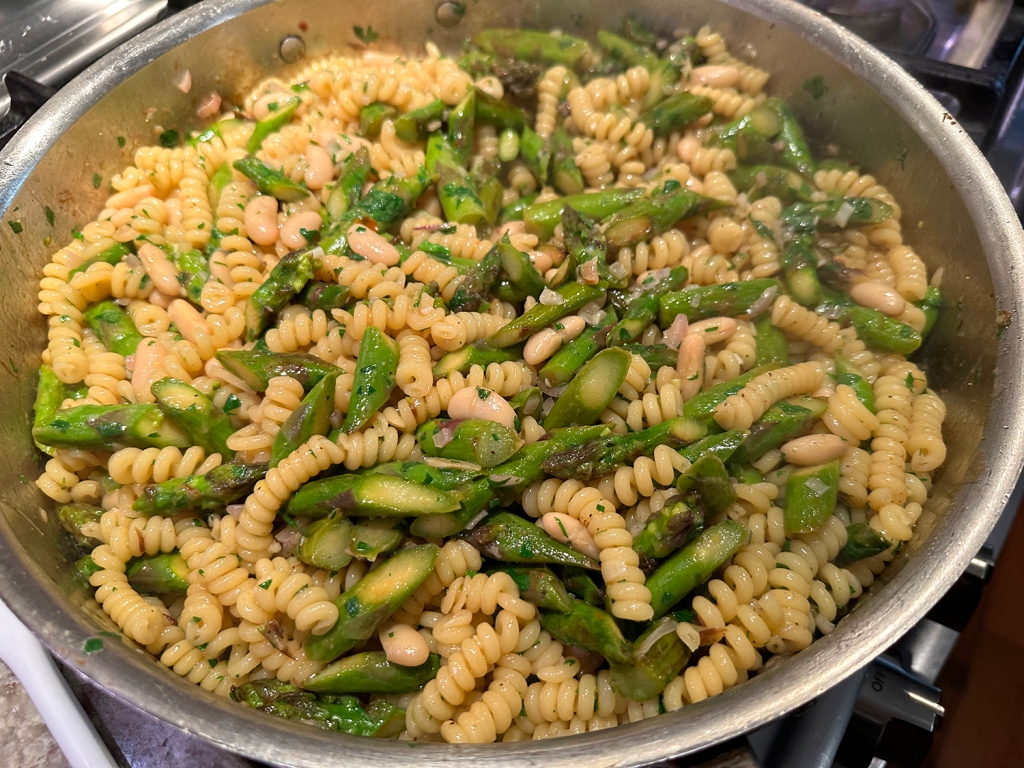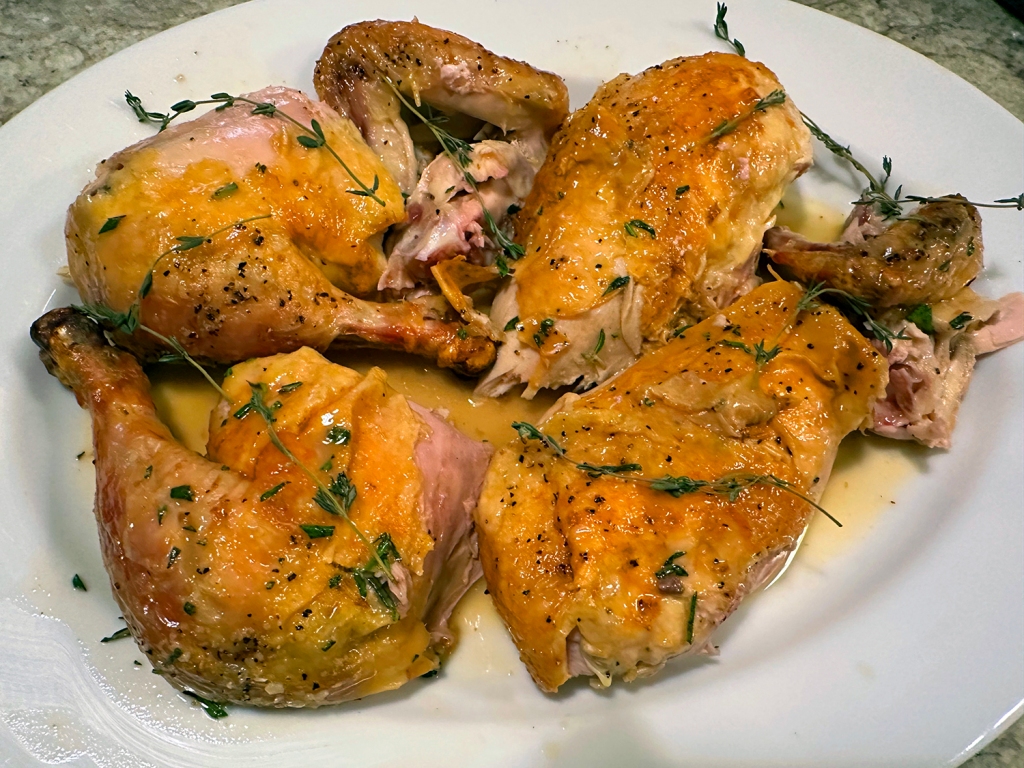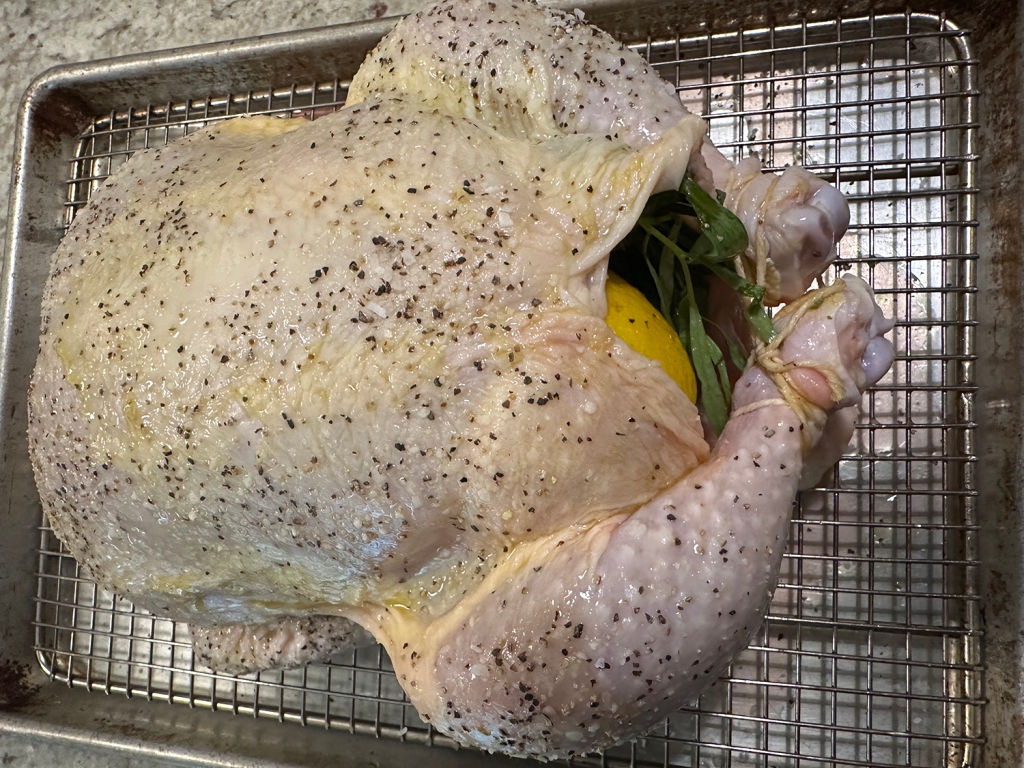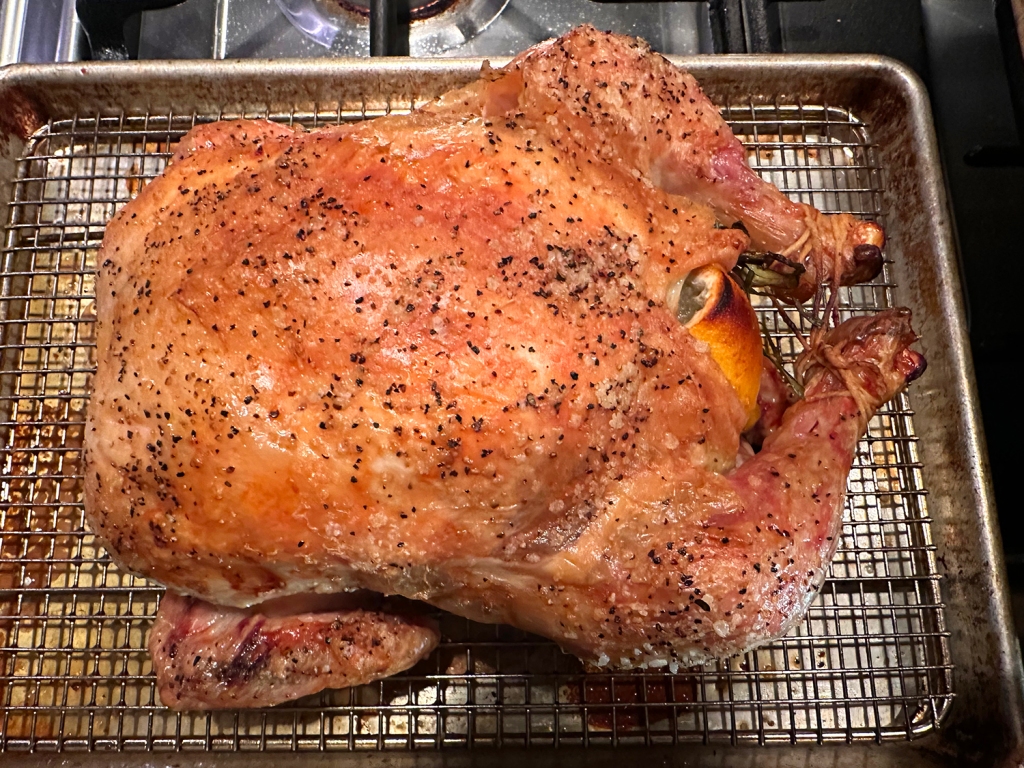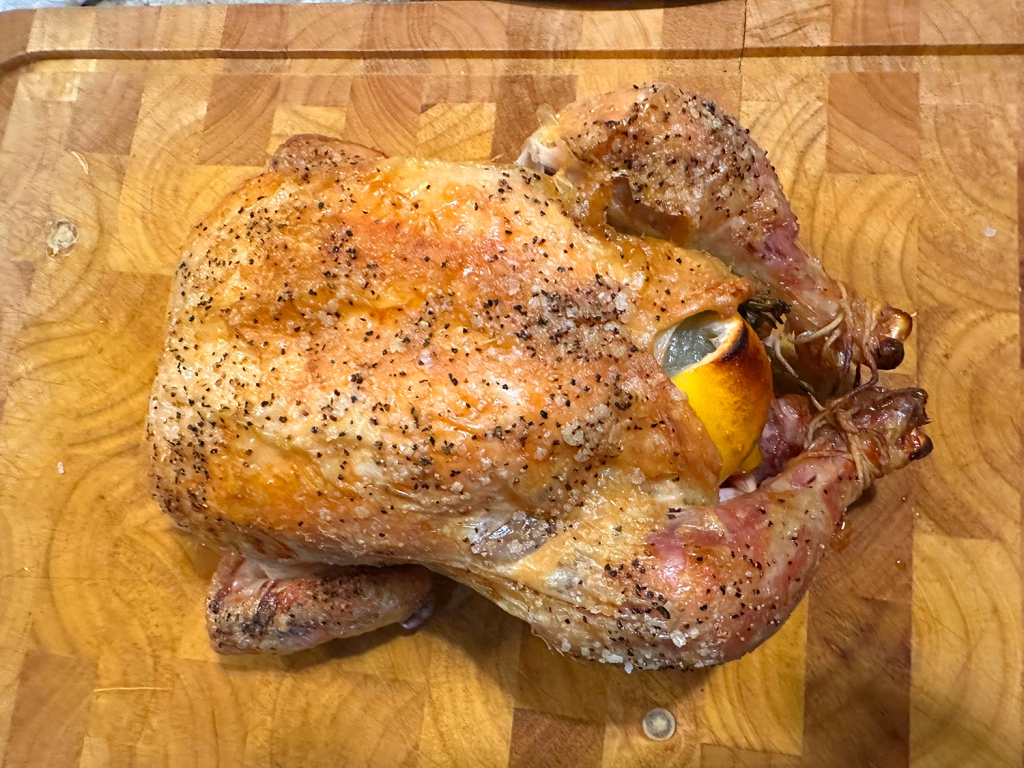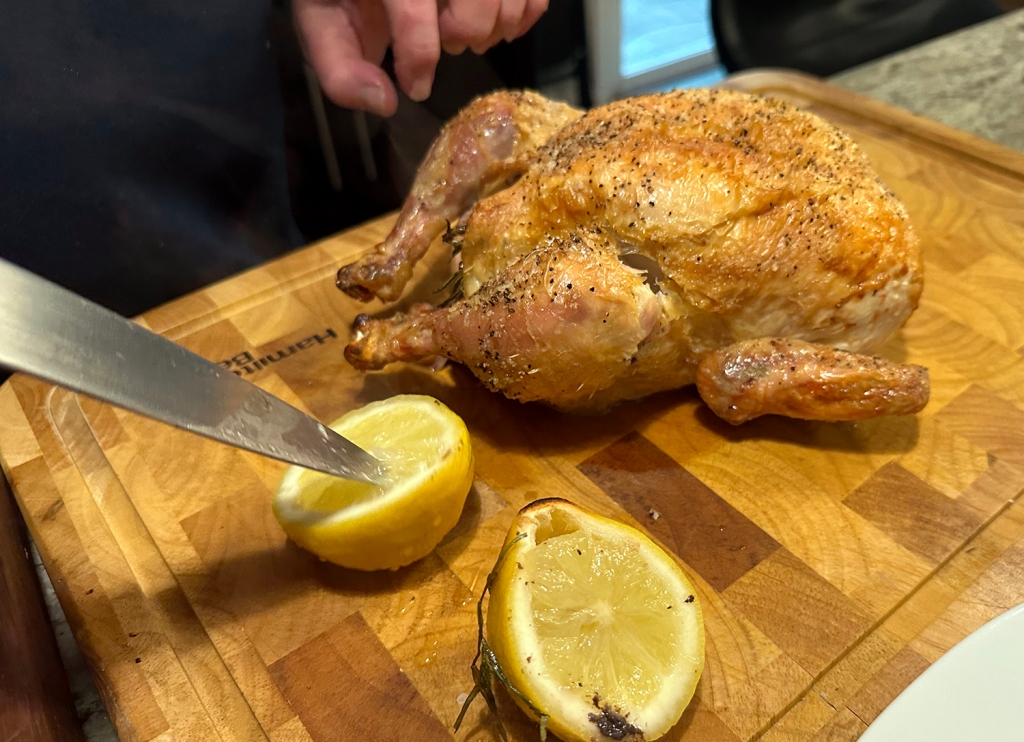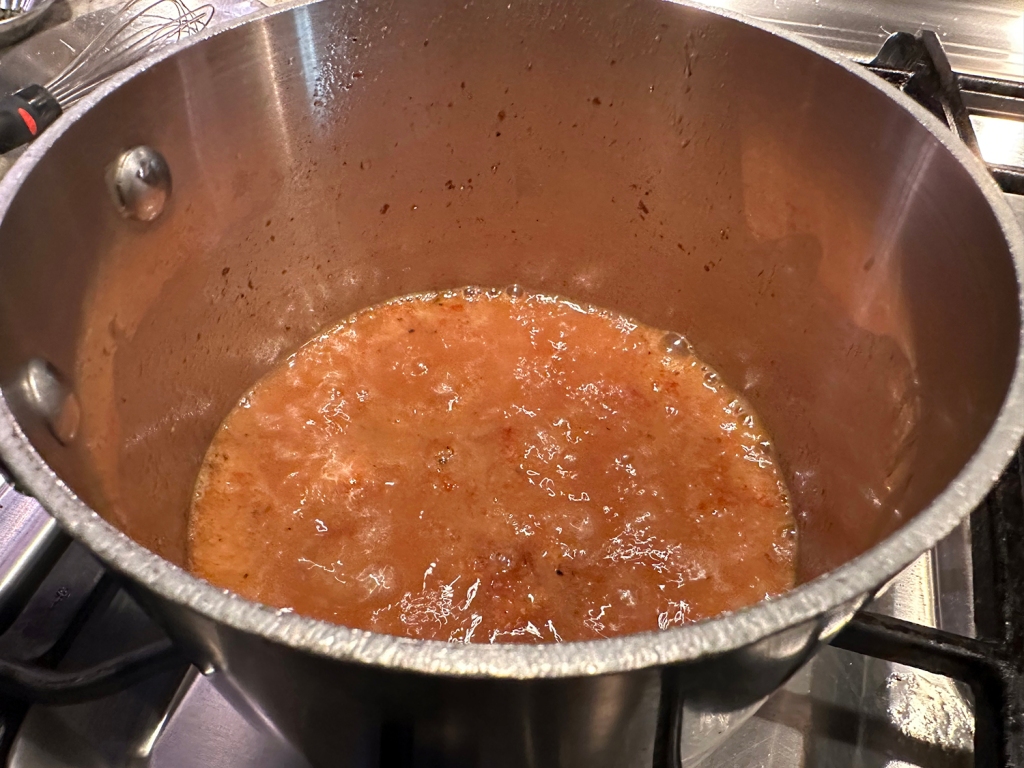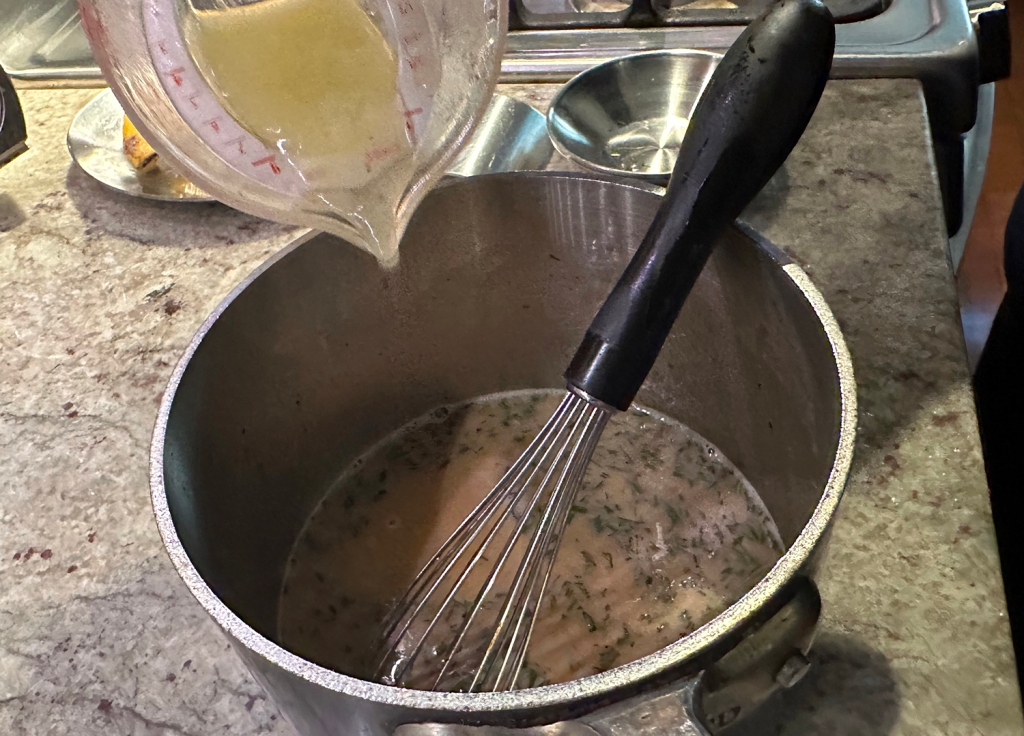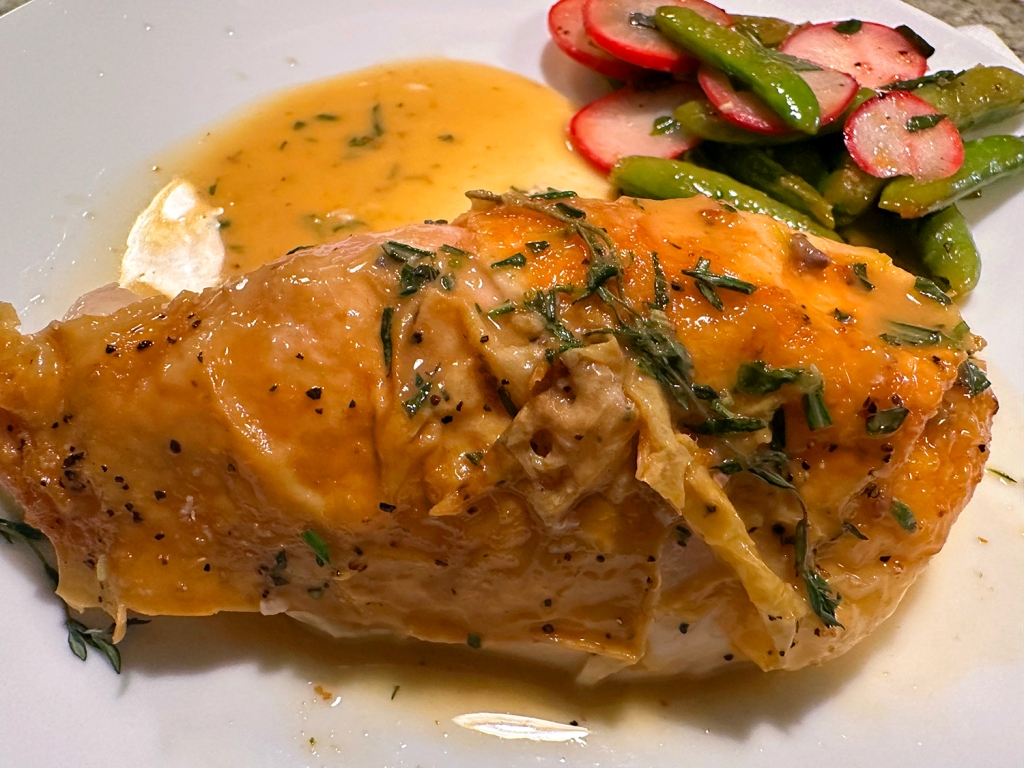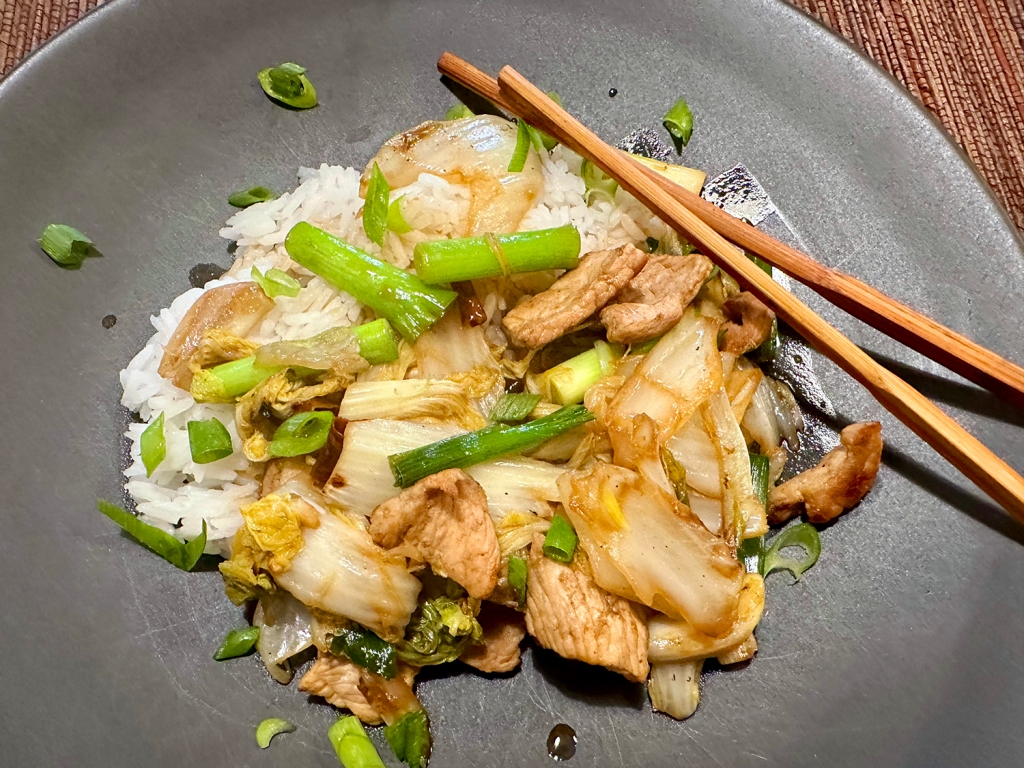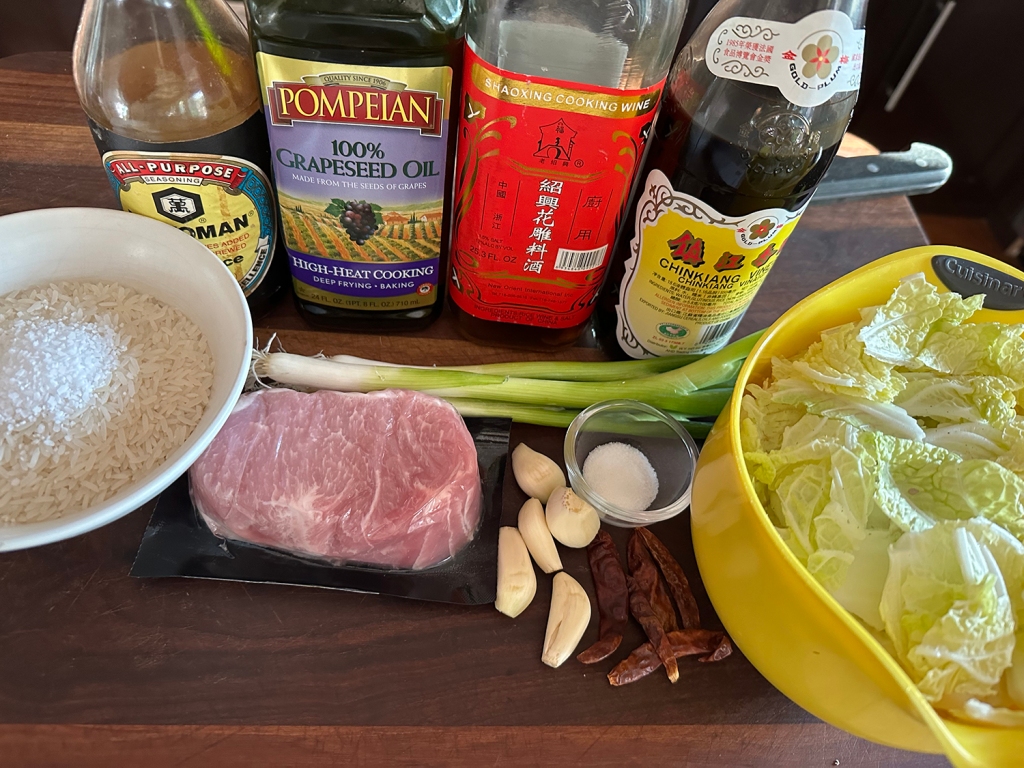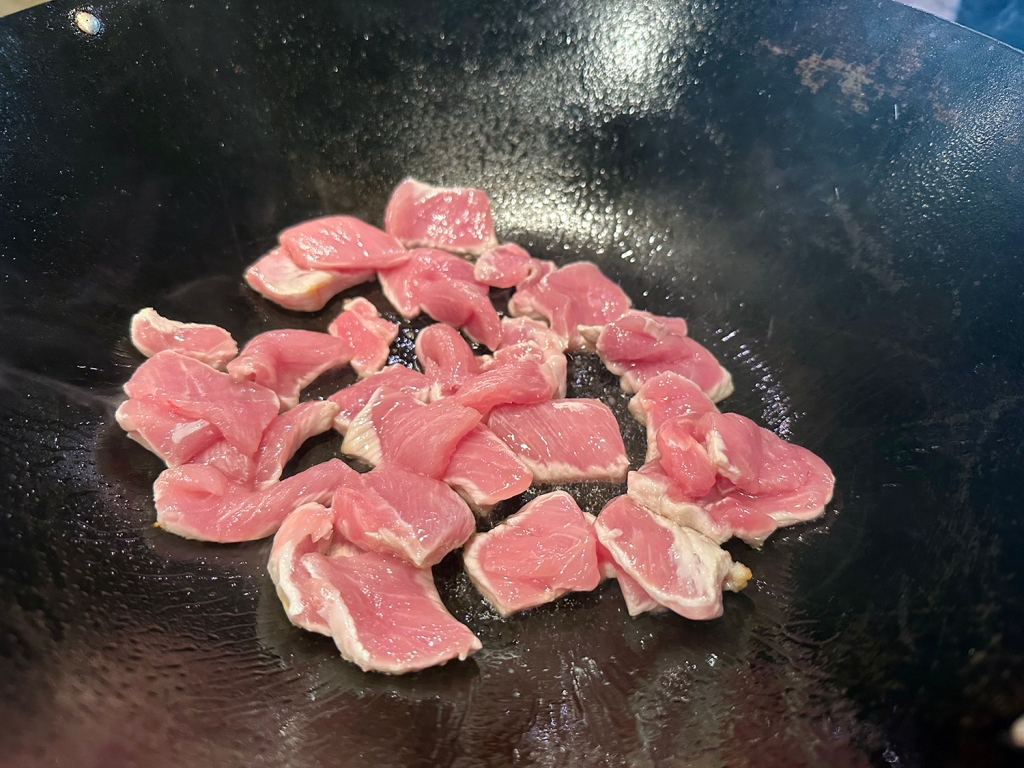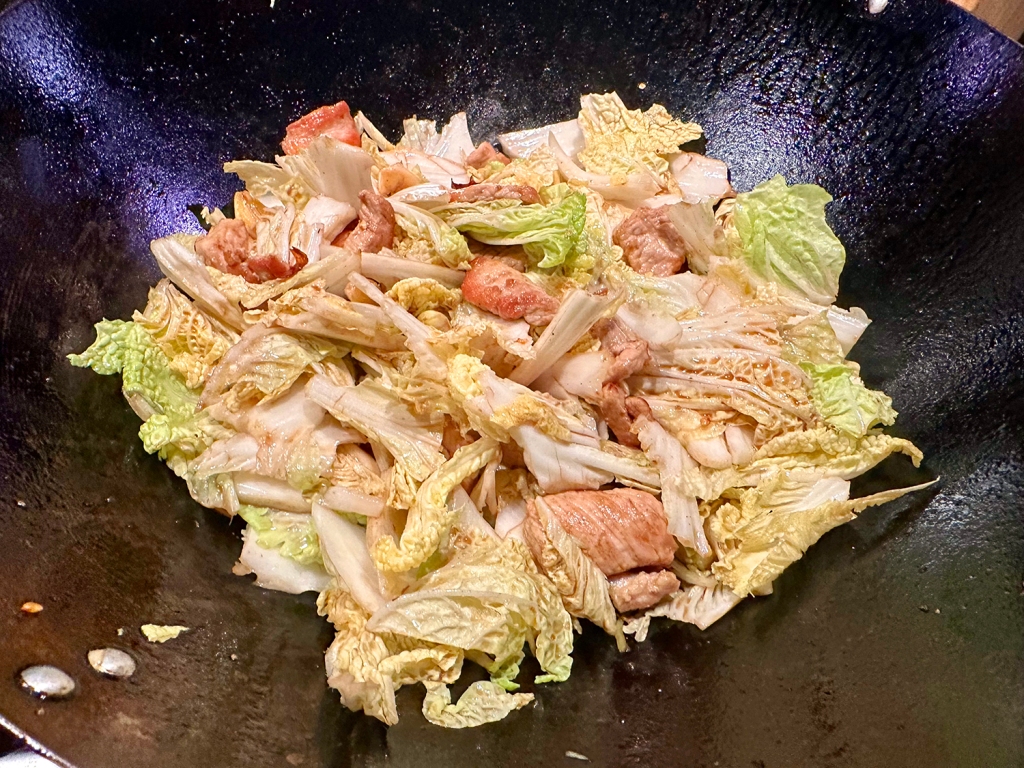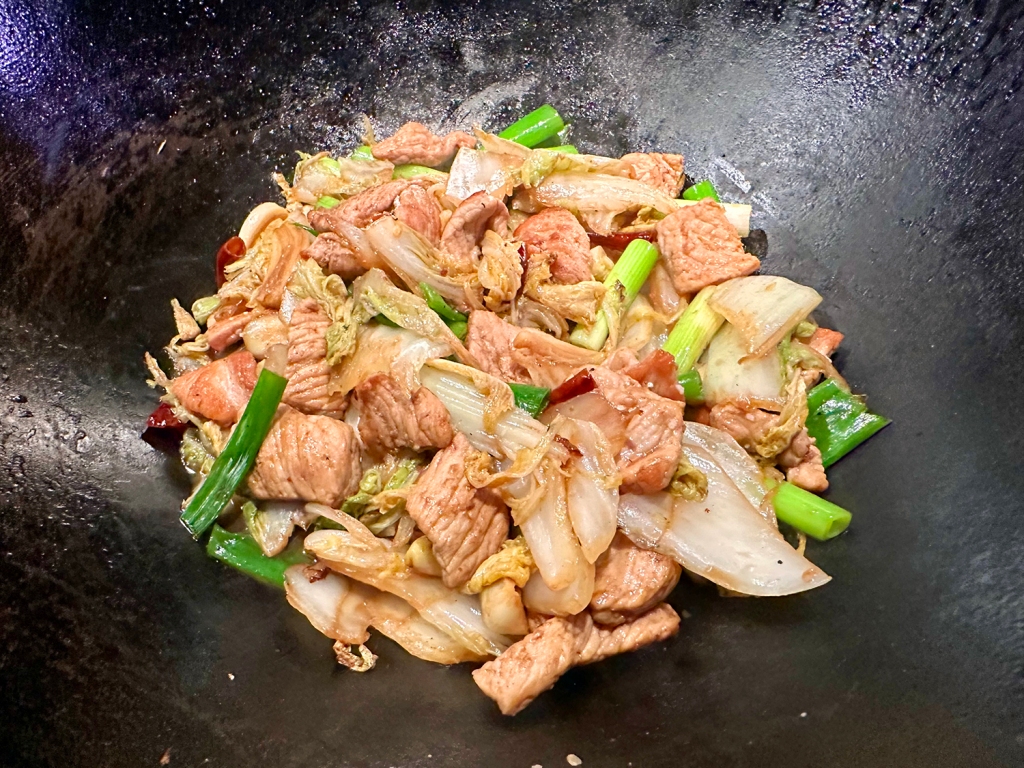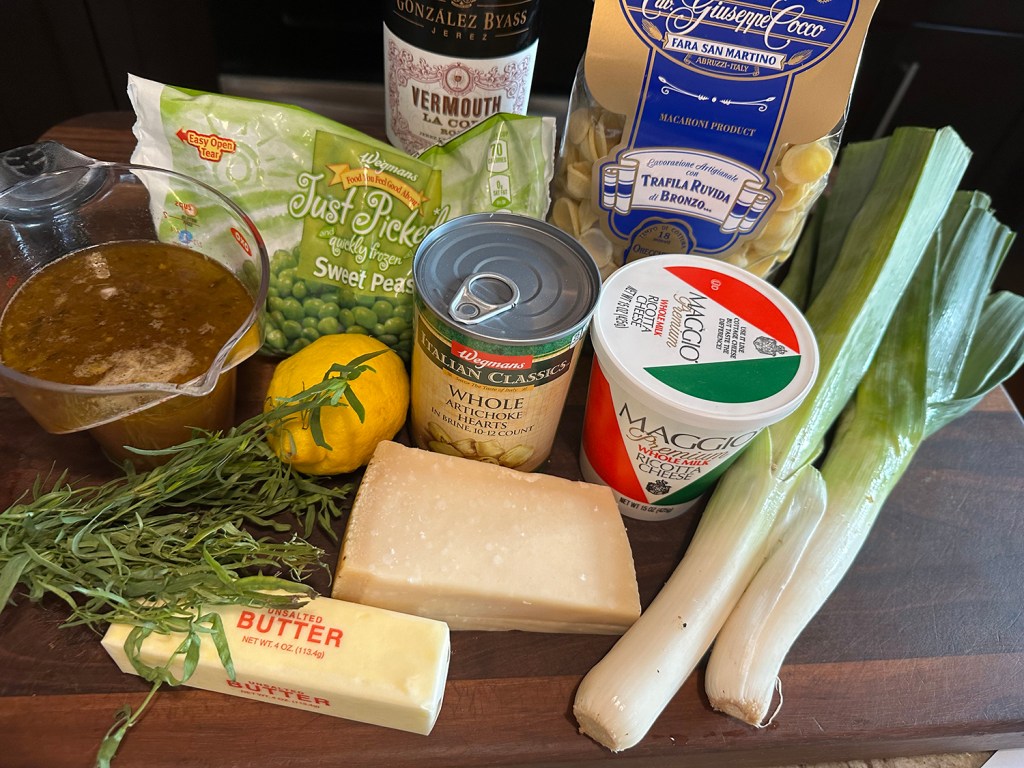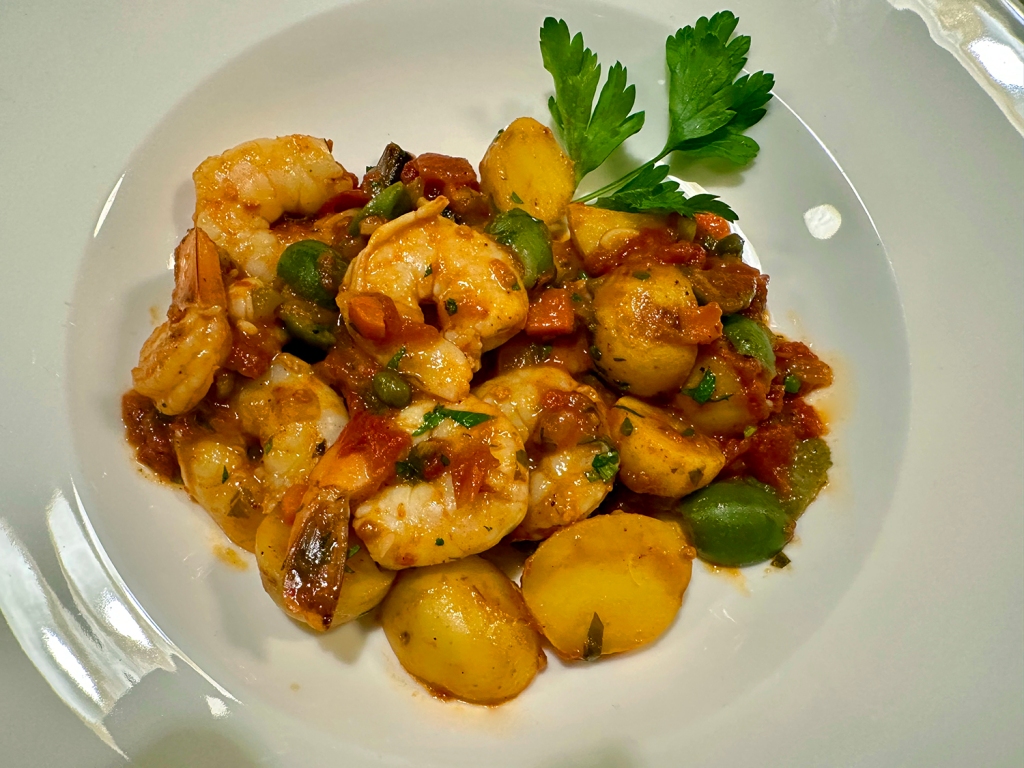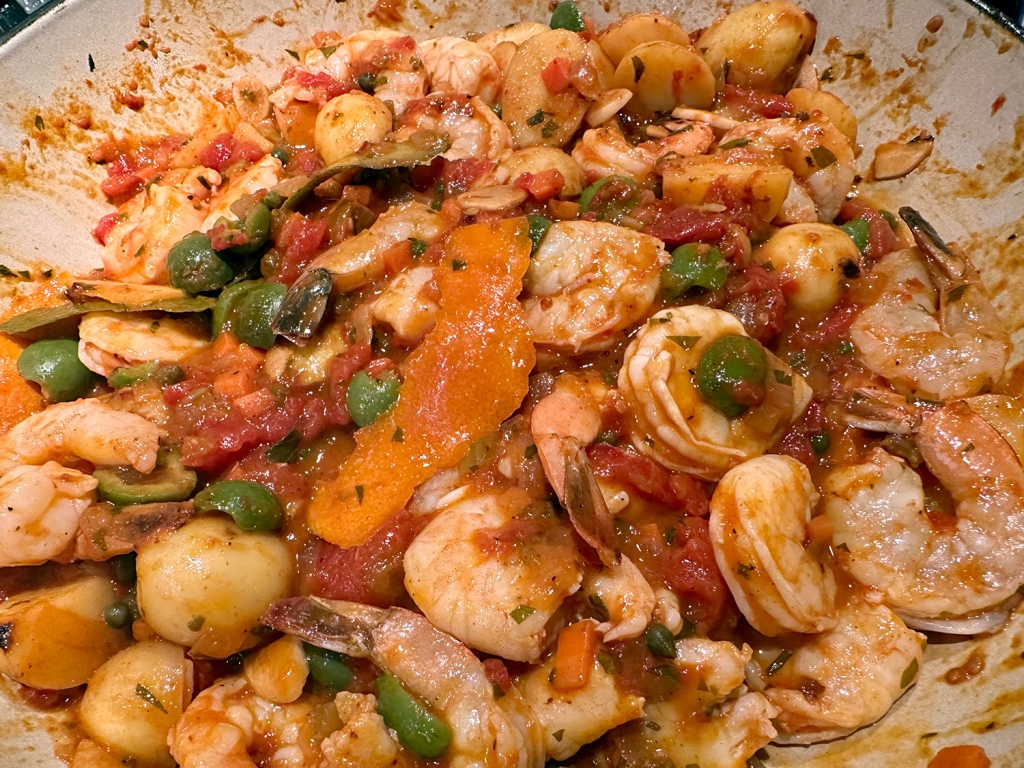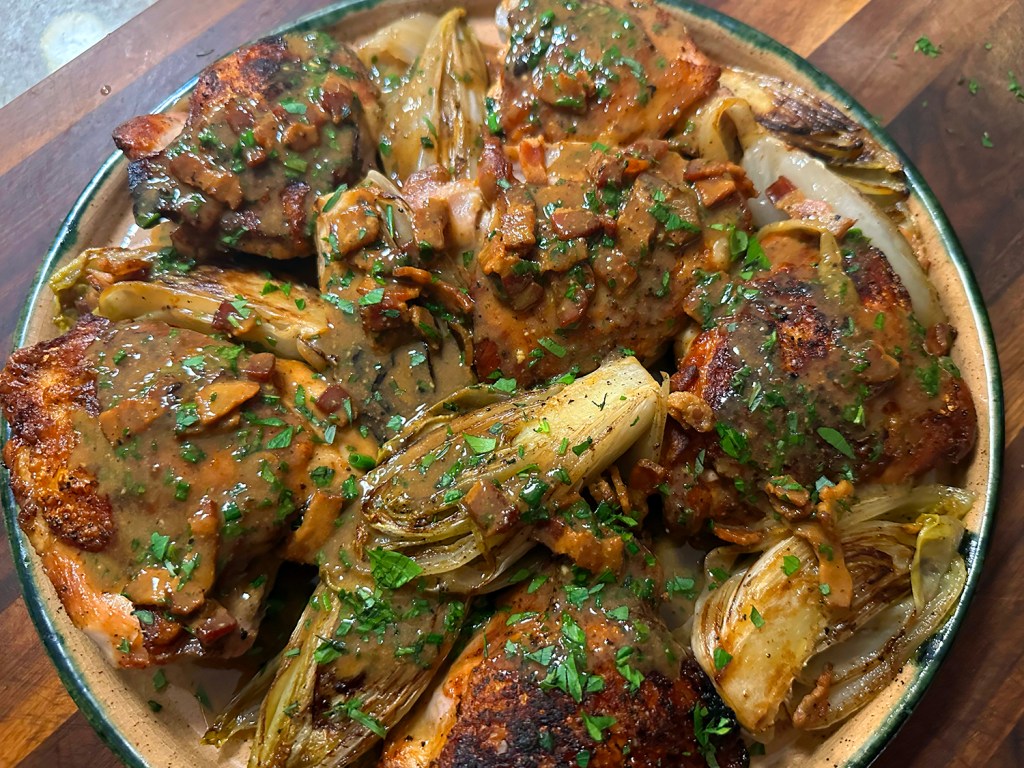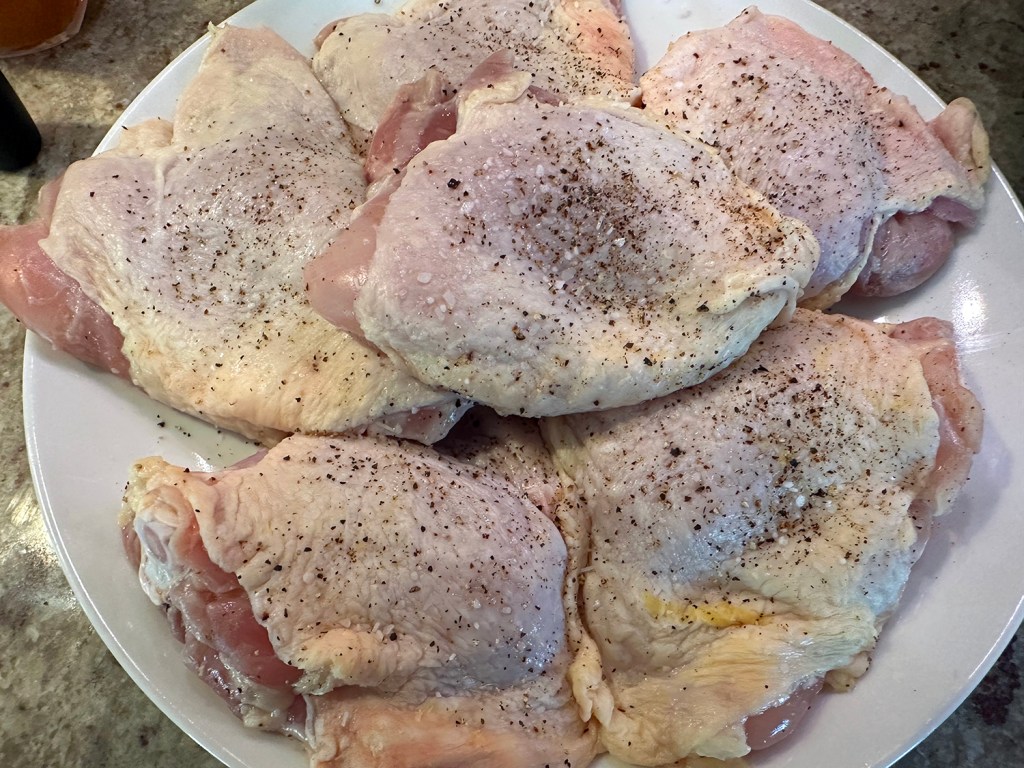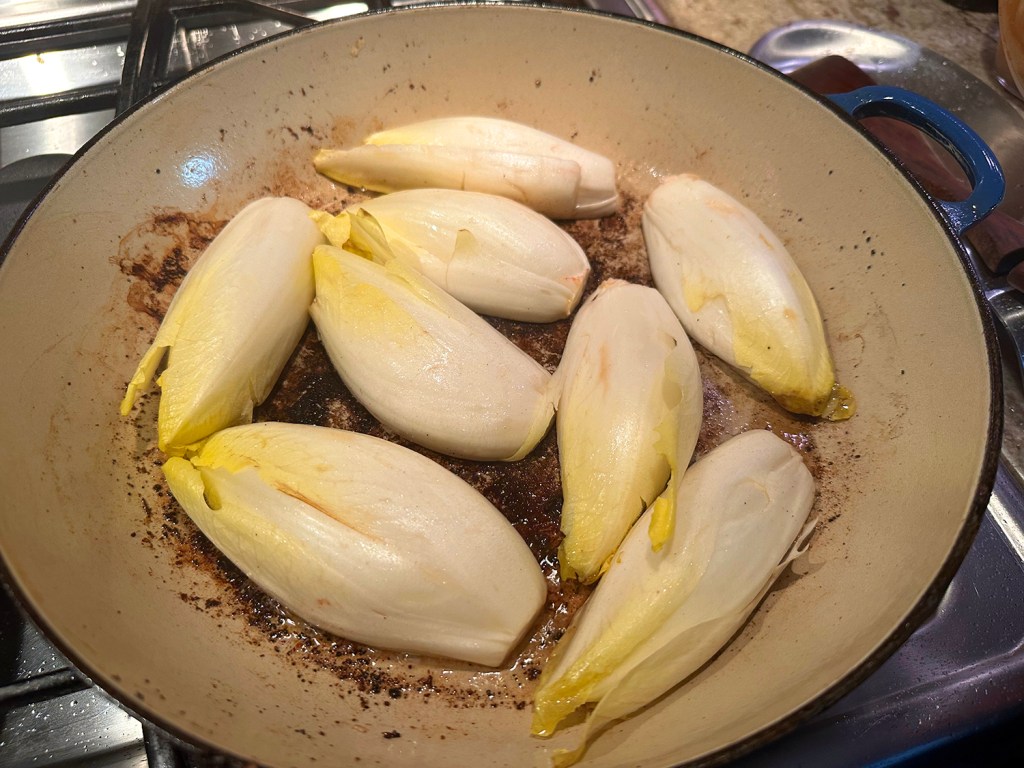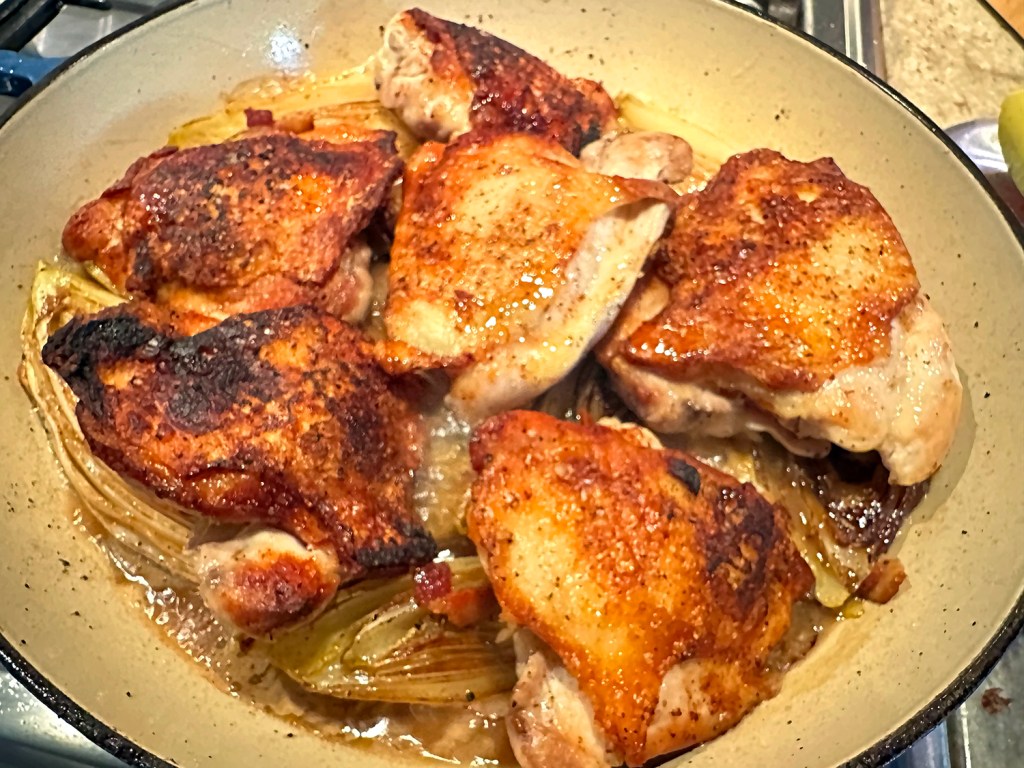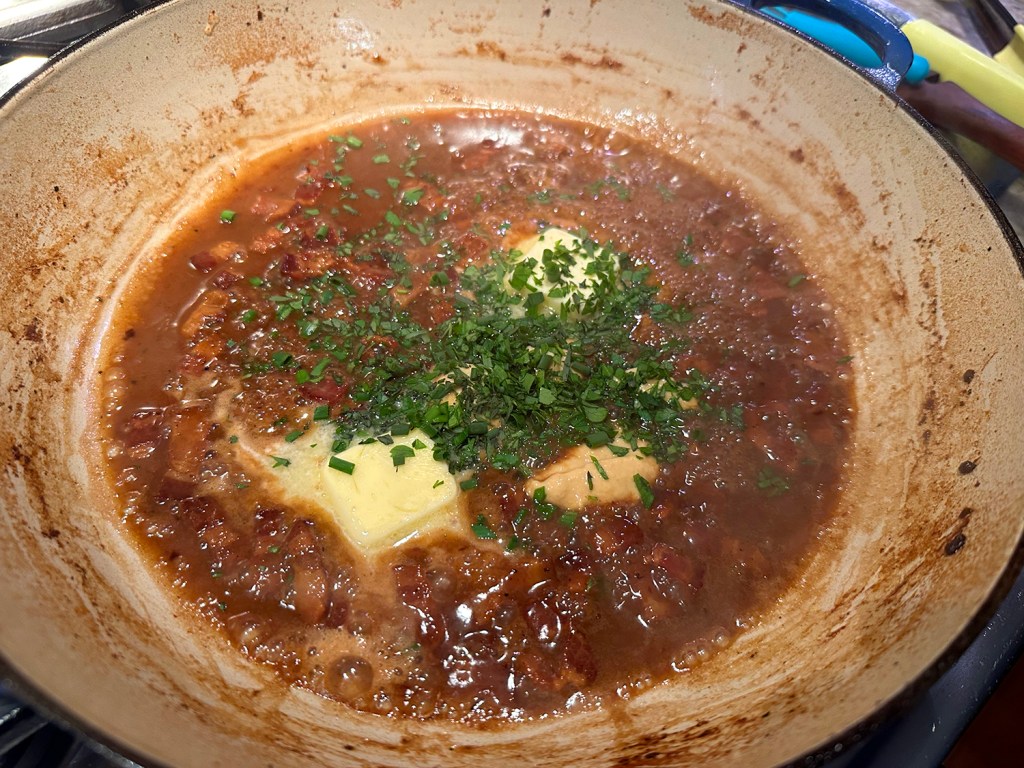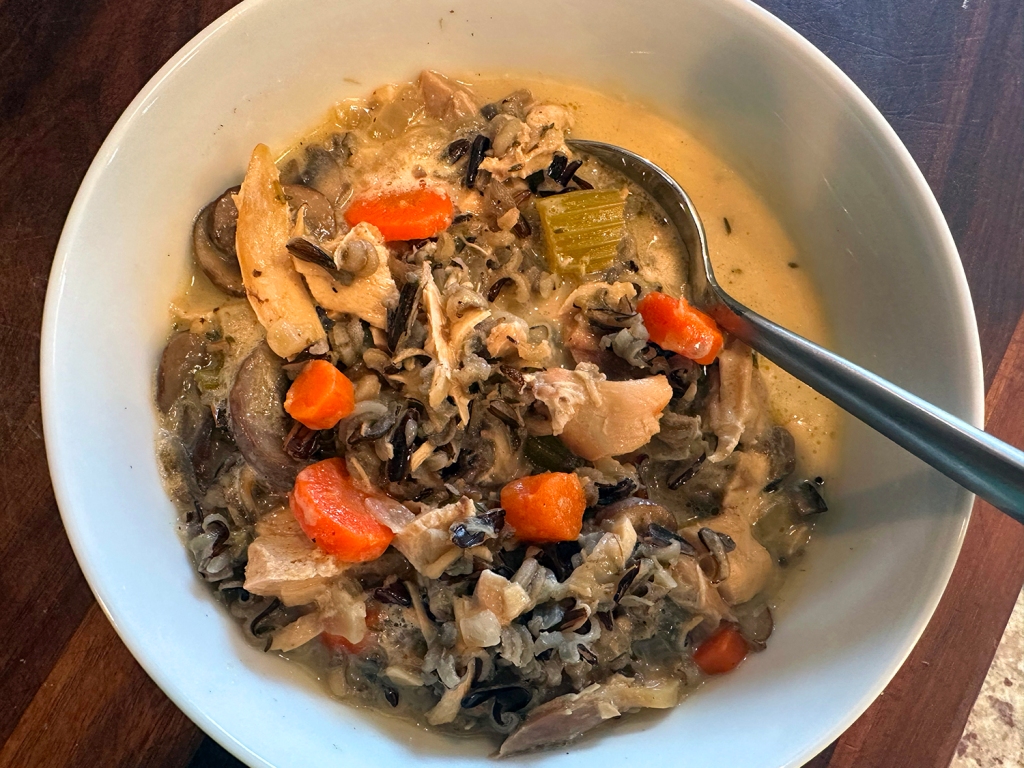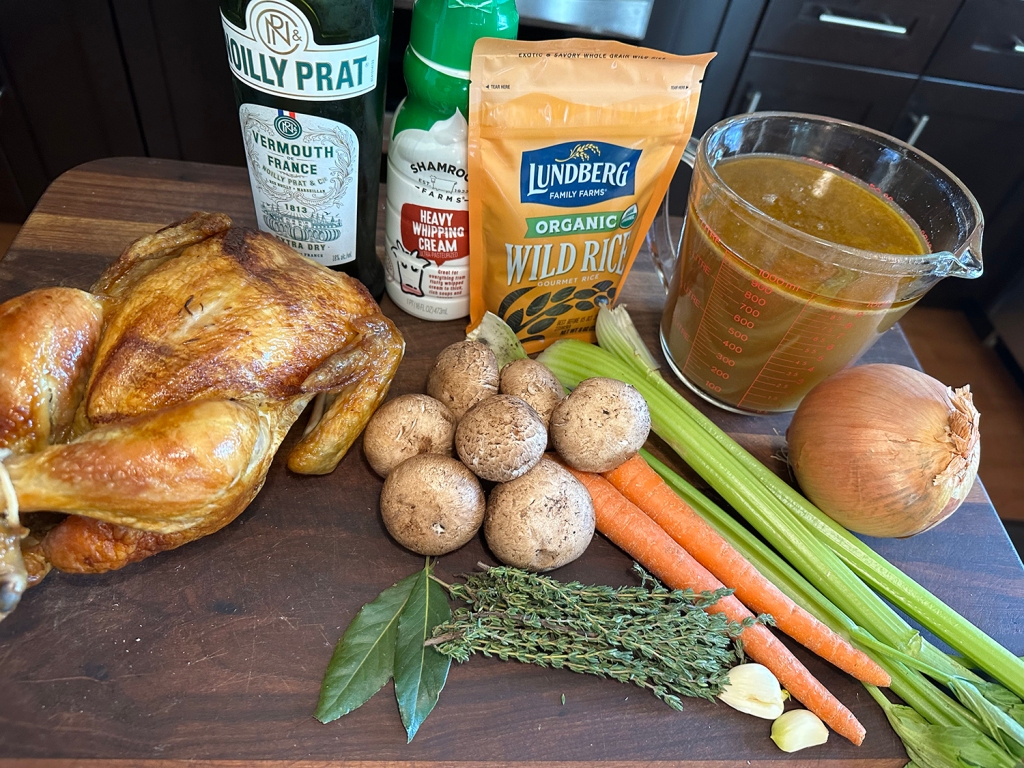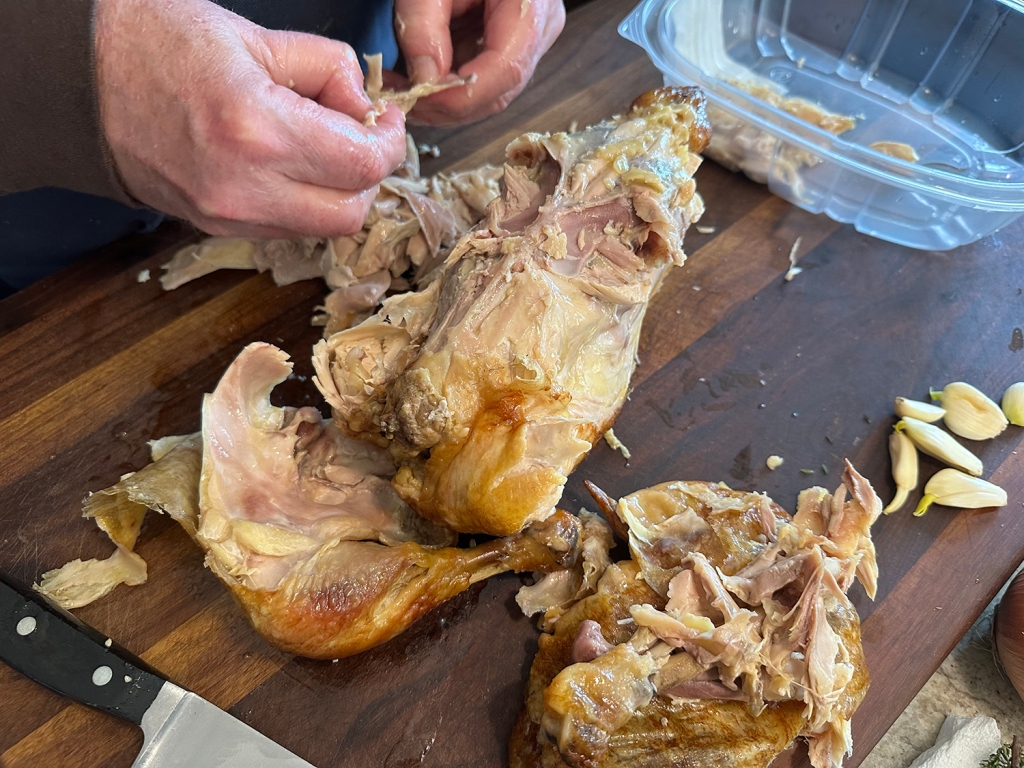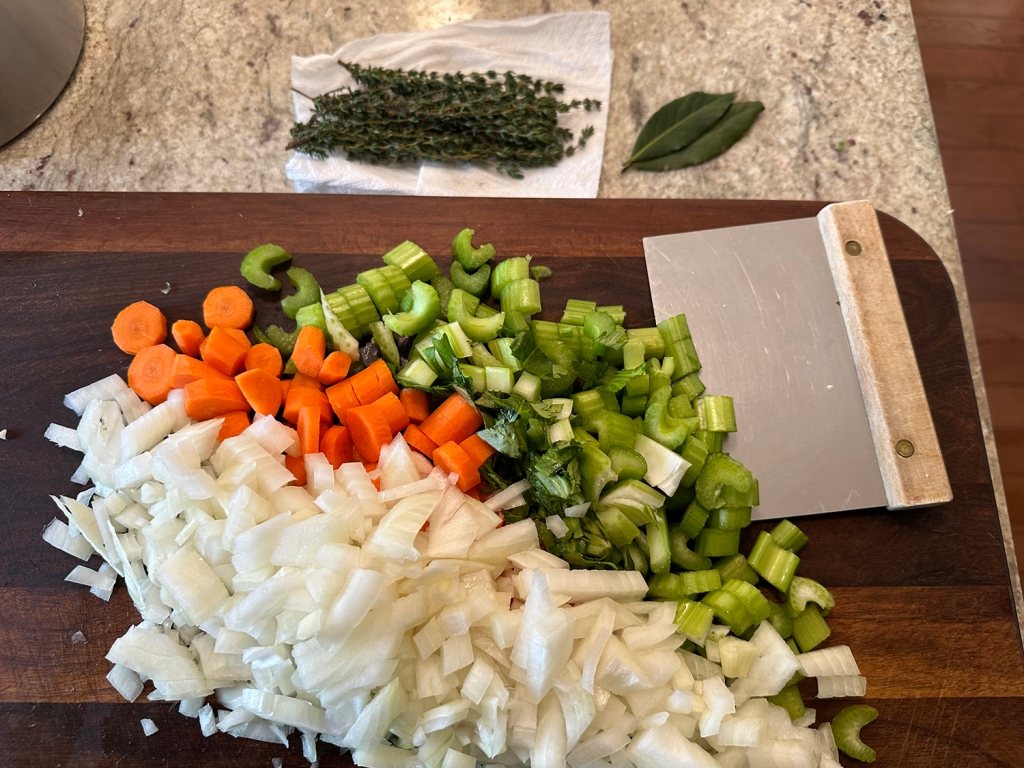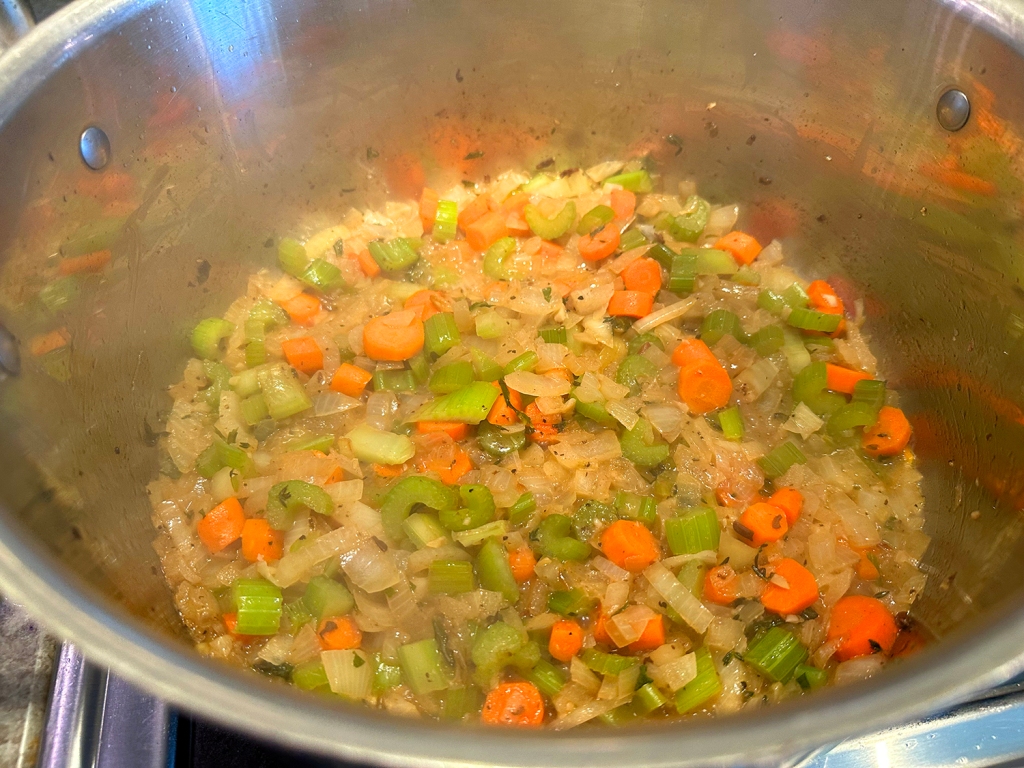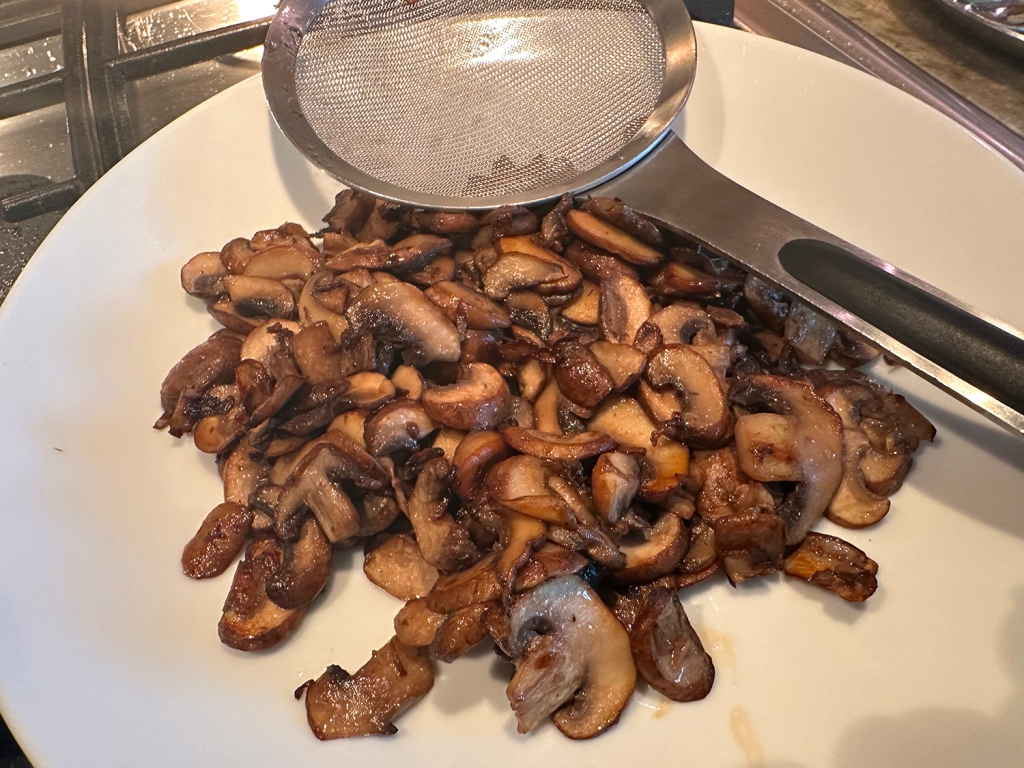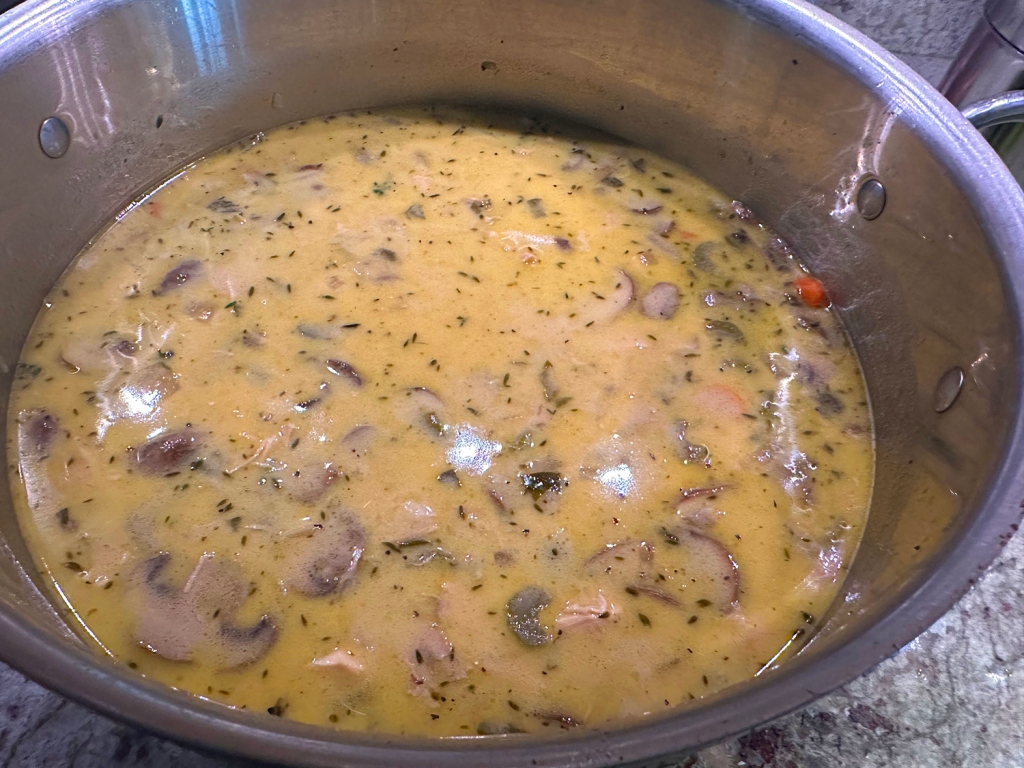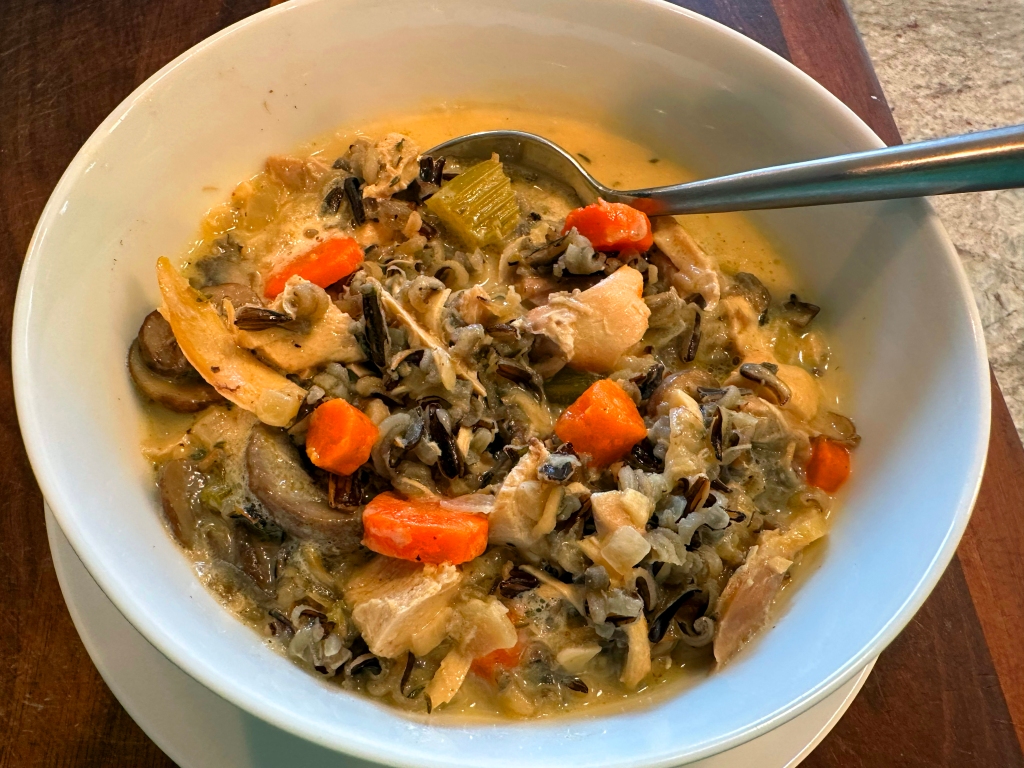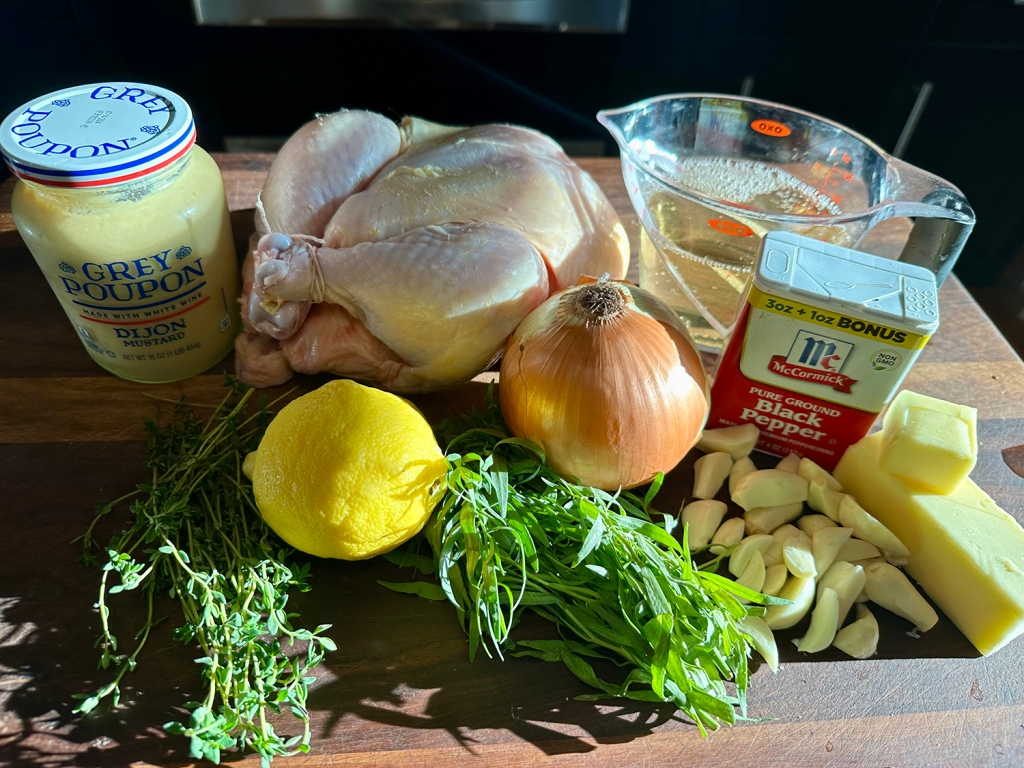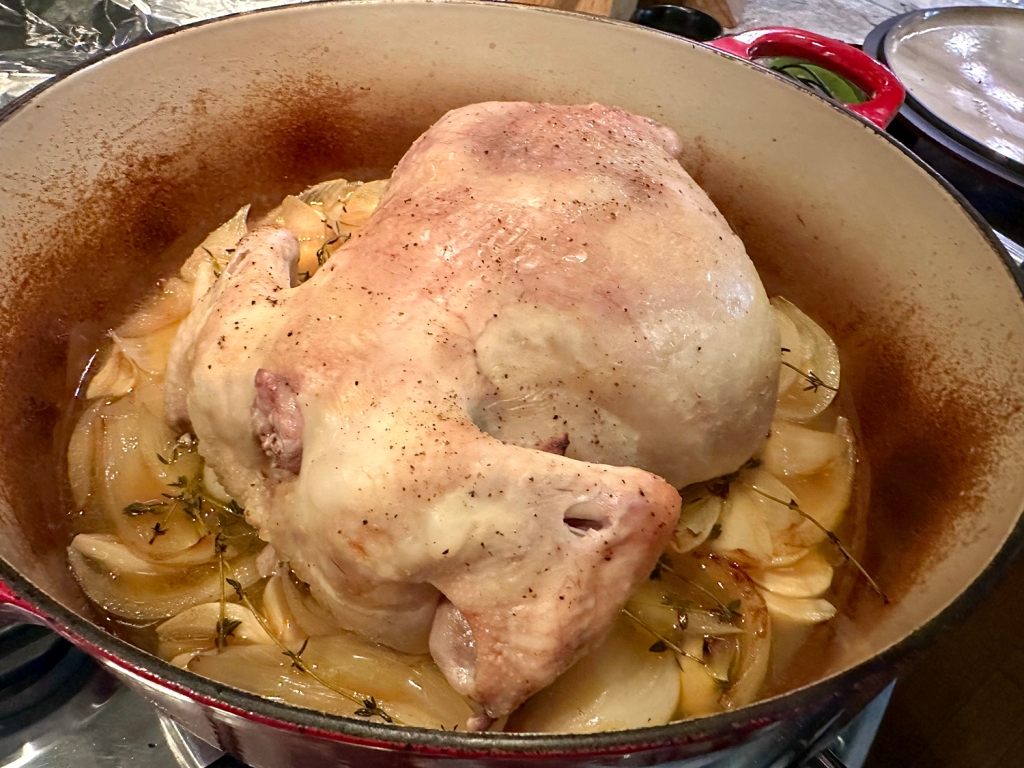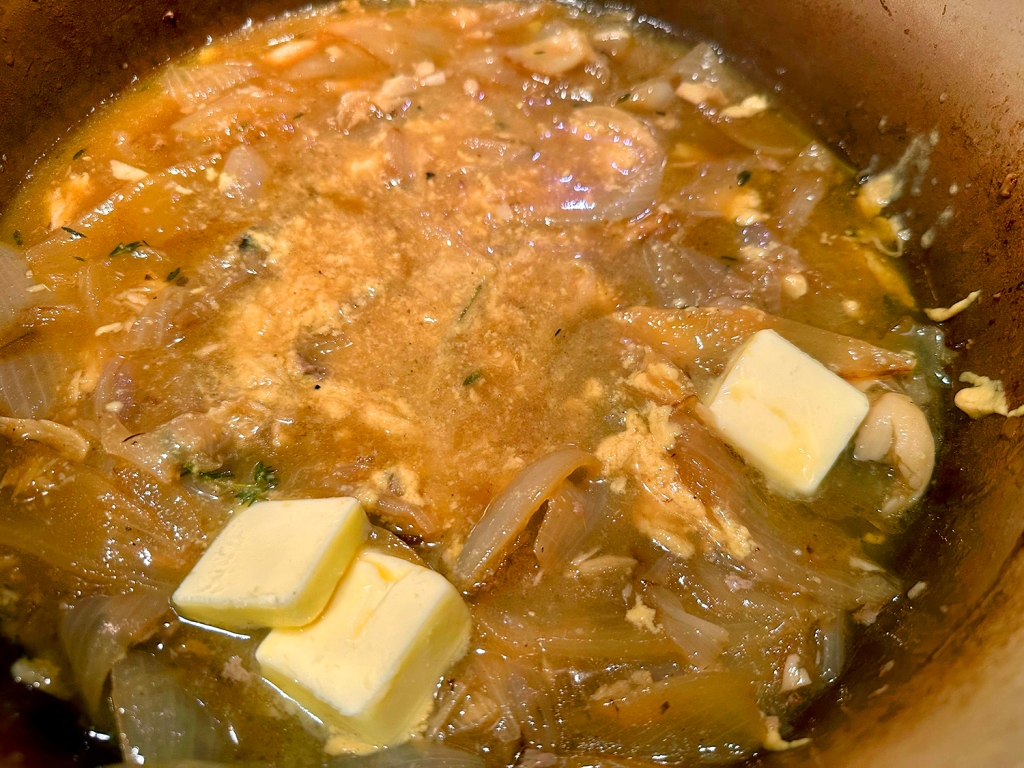Salmon is one of our go-to fish purchases. Usually it is priced relatively well, and we can source good salmon from one of two places close by. Slathered in a creamy horseradish mayonnaise, salmon fillet is a weeknight winner. (You can cook smaller fillets or one larger center-cut piece, whichever you prefer.)
The key to moist, flavorful salmon is to roast it at a high temperature for a short length of time. Here it’s baked alongside tangy mustard potatoes, but asparagus, broccoli or even green beans would be nice, too. If using less hearty vegetables, just cut the initial bake time down to 5 to 10 minutes.

For future repeat on this recipe, we recommend to add more potatoes; use Dijon instead of whole grain mustard (which didn’t stick to the potatoes). The fix is one tablespoon Dijon, with one tablespoon whole grain mustard.

Horseradish Roasted Salmon with Mustard Potatoes
Ingredients
- 1 lb. baby Yukon Gold potatoes, halved if large
- 3 Tbsp. olive oil
- 2 Tbsp. whole-grain mustard
- Kosher salt and coarsely ground black pepper
- 3 Tbsp. mayonnaise
- 2 Tbsp. drained prepared horseradish
- 2 limes
- 1½ lbs. skinless salmon fillet (preferably 1 single center-cut piece)
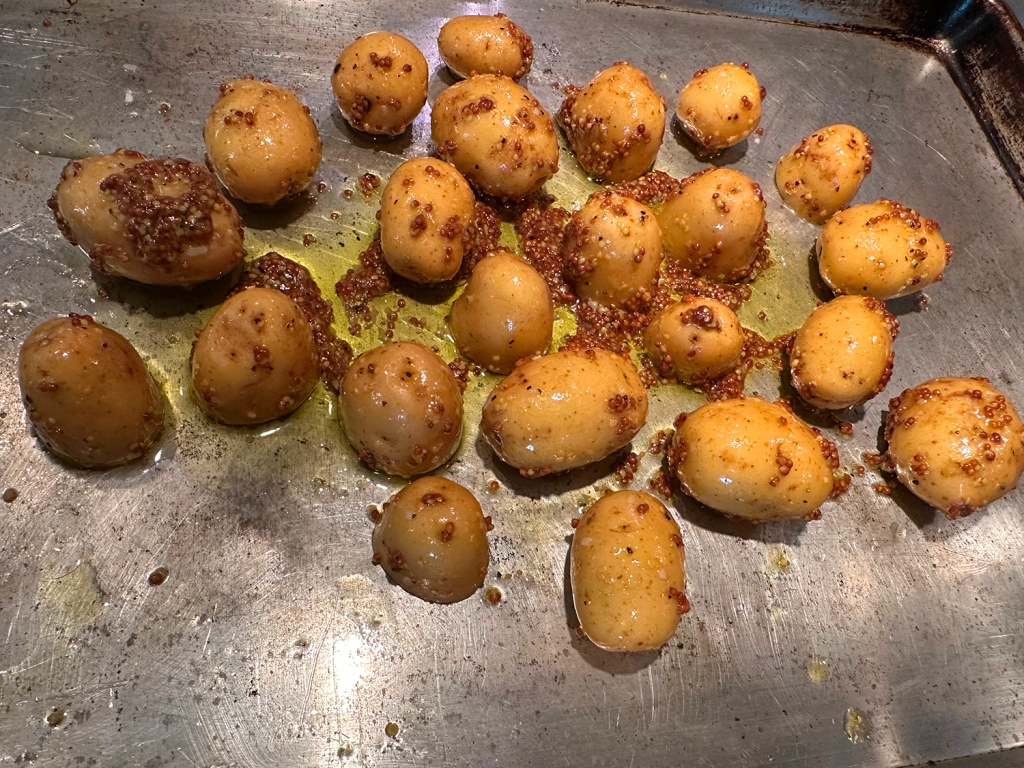



Directions
- Heat oven to 400 degrees.
- On a rimmed sheet pan, toss together the potatoes, olive oil and mustard. Season with salt and pepper. Roast for 20 minutes, tossing once halfway through.
- Meanwhile, combine the mayonnaise and horseradish in a small bowl. Finely grate 2 teaspoons lime zest and then cut the remaining lime into wedges. Add the lime zest to the mayonnaise mixture and season to taste with salt and pepper. Season the salmon with salt and pepper and then slather the sauce all over the top and sides.
- Remove the potatoes from the oven and use a spatula to make space in the center of the pan. Add the salmon, skinned side down. Return the pan to the oven and cook until the potatoes are browned and tender and the salmon is cooked through to your liking, 10 to 20 minutes, depending on the thickness of the salmon.
- Serve the salmon and potatoes with lime wedges.
Recipe by Julia Gartland for NYTimes Cooking





